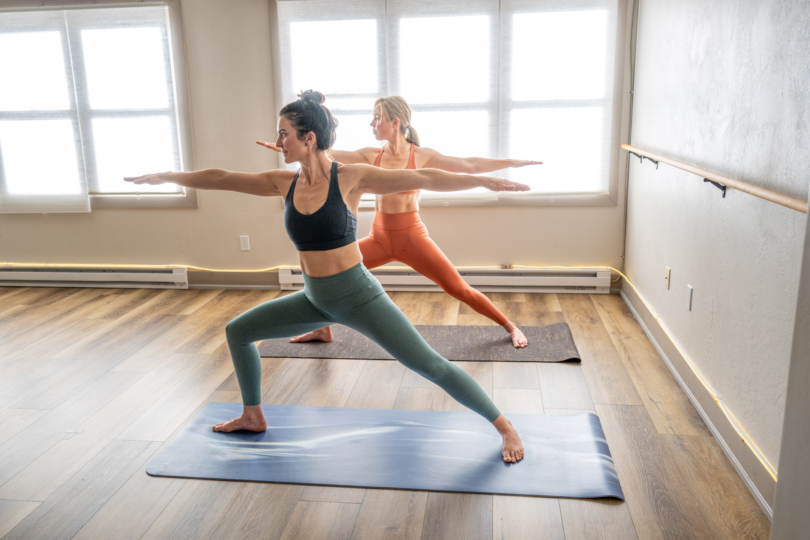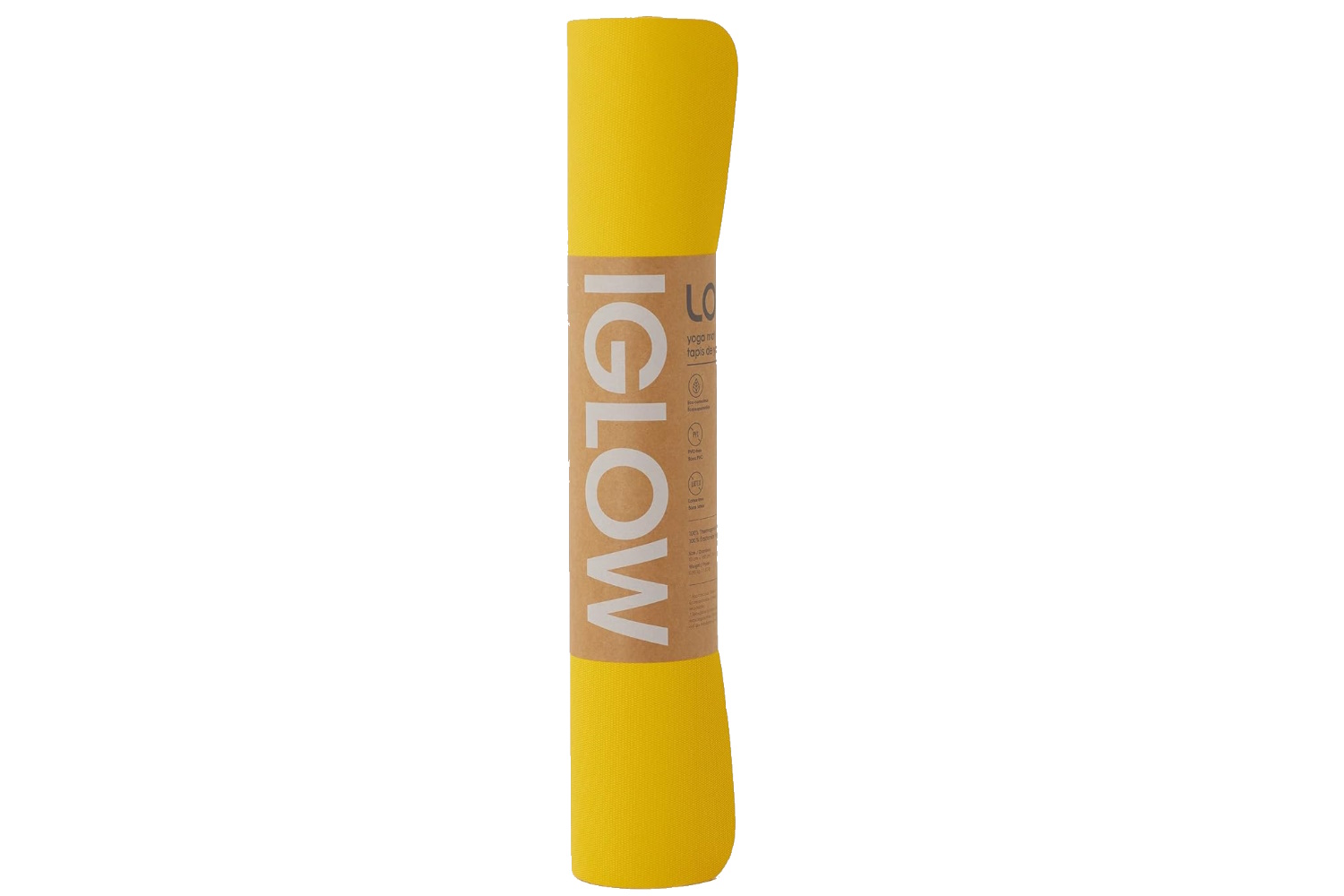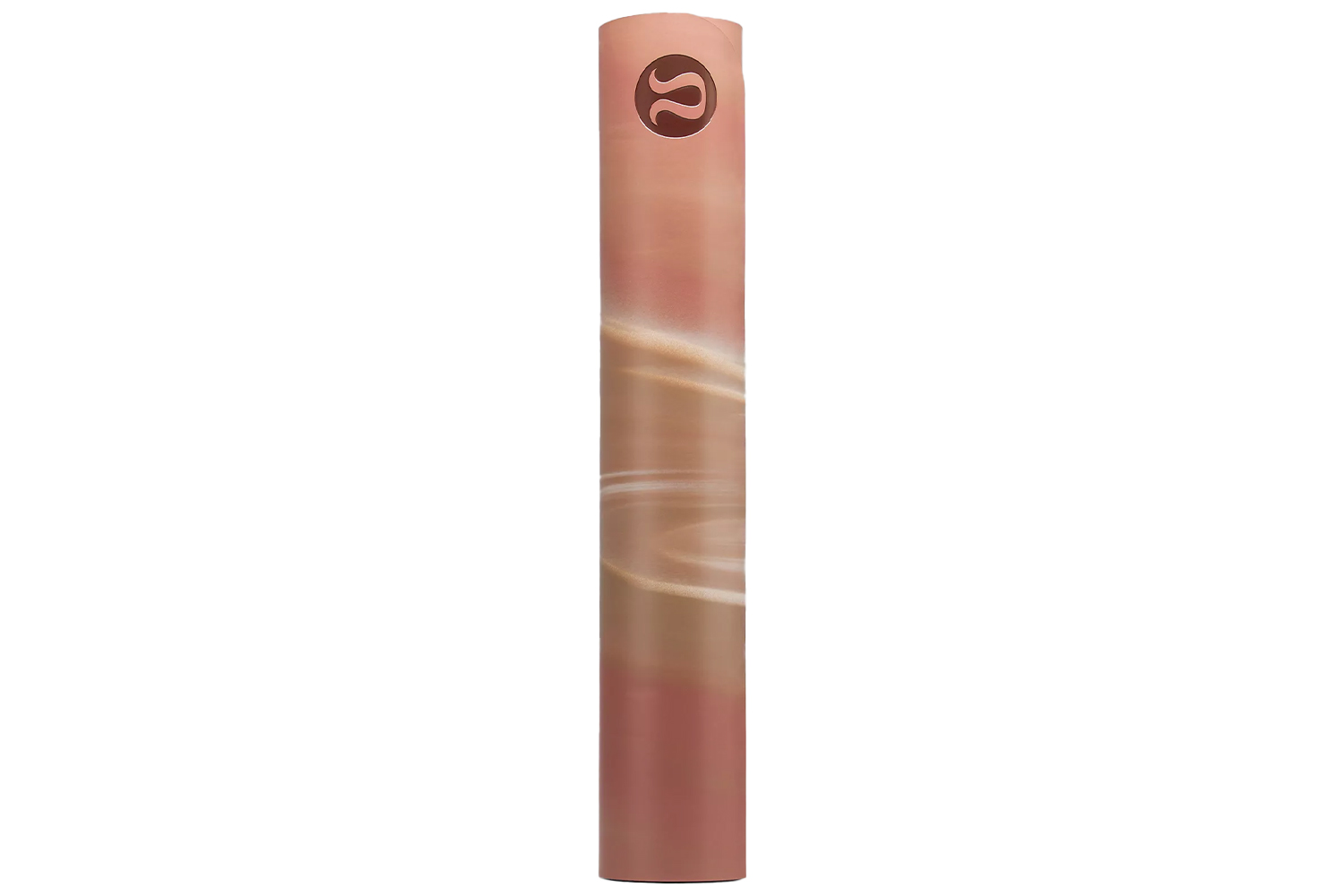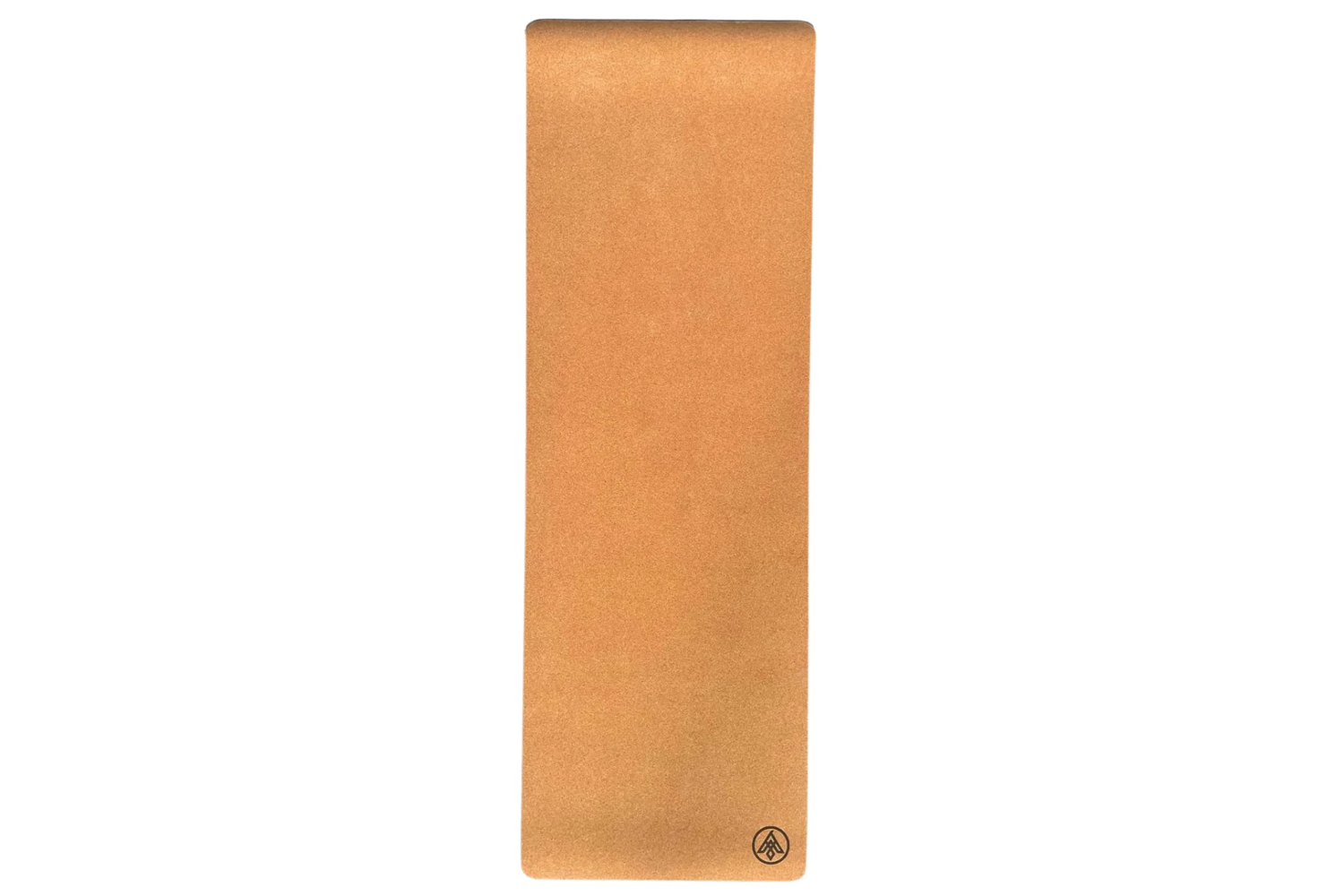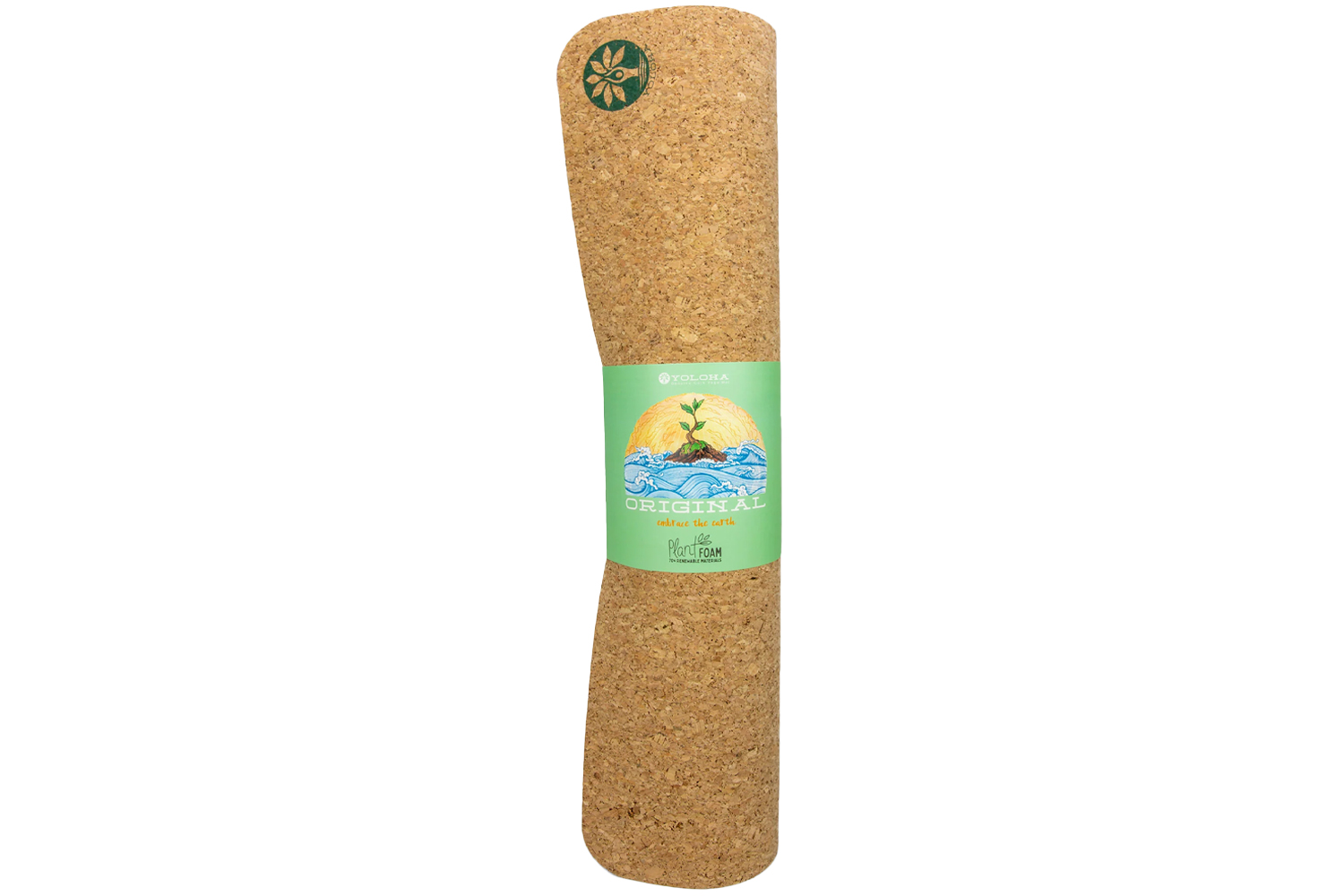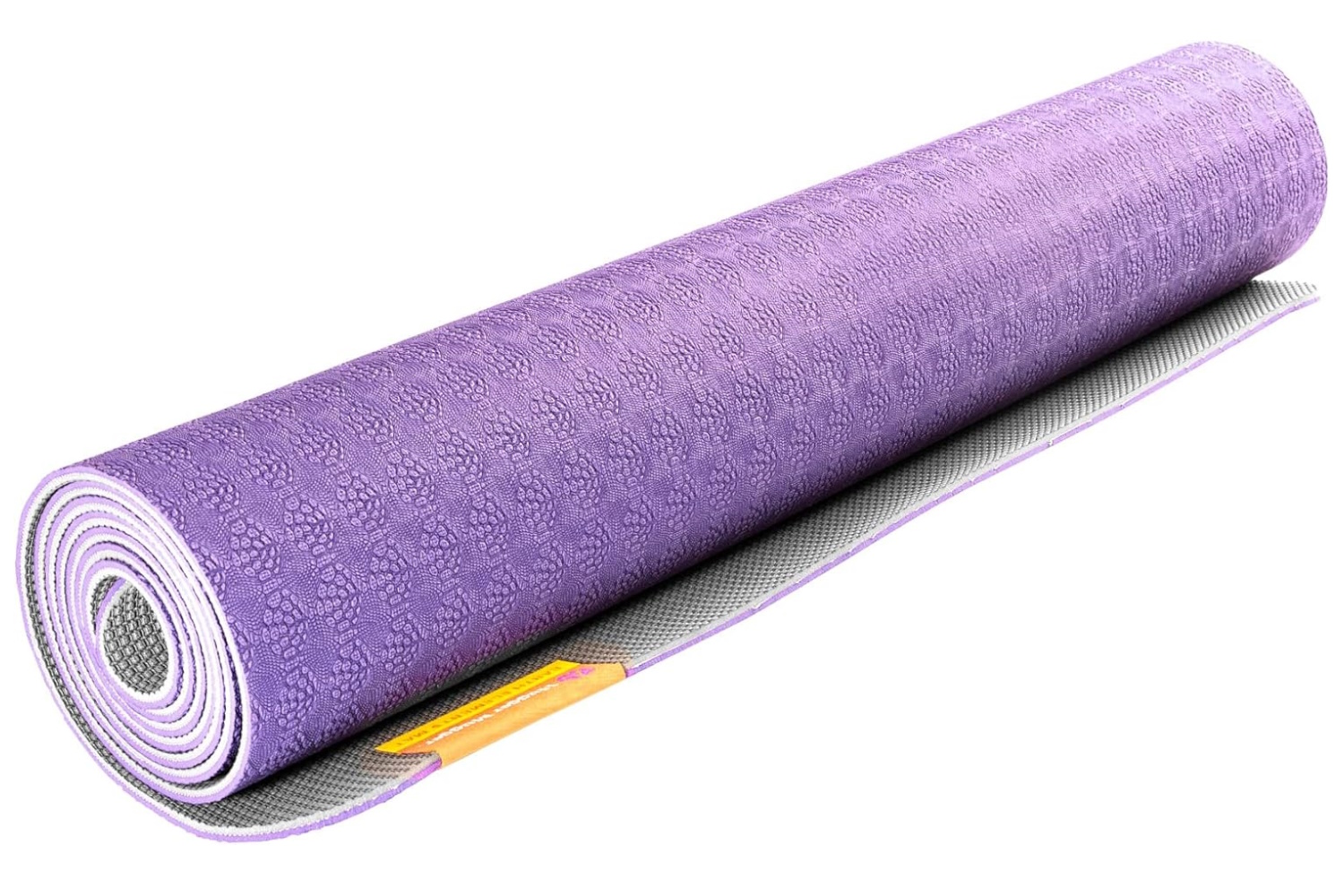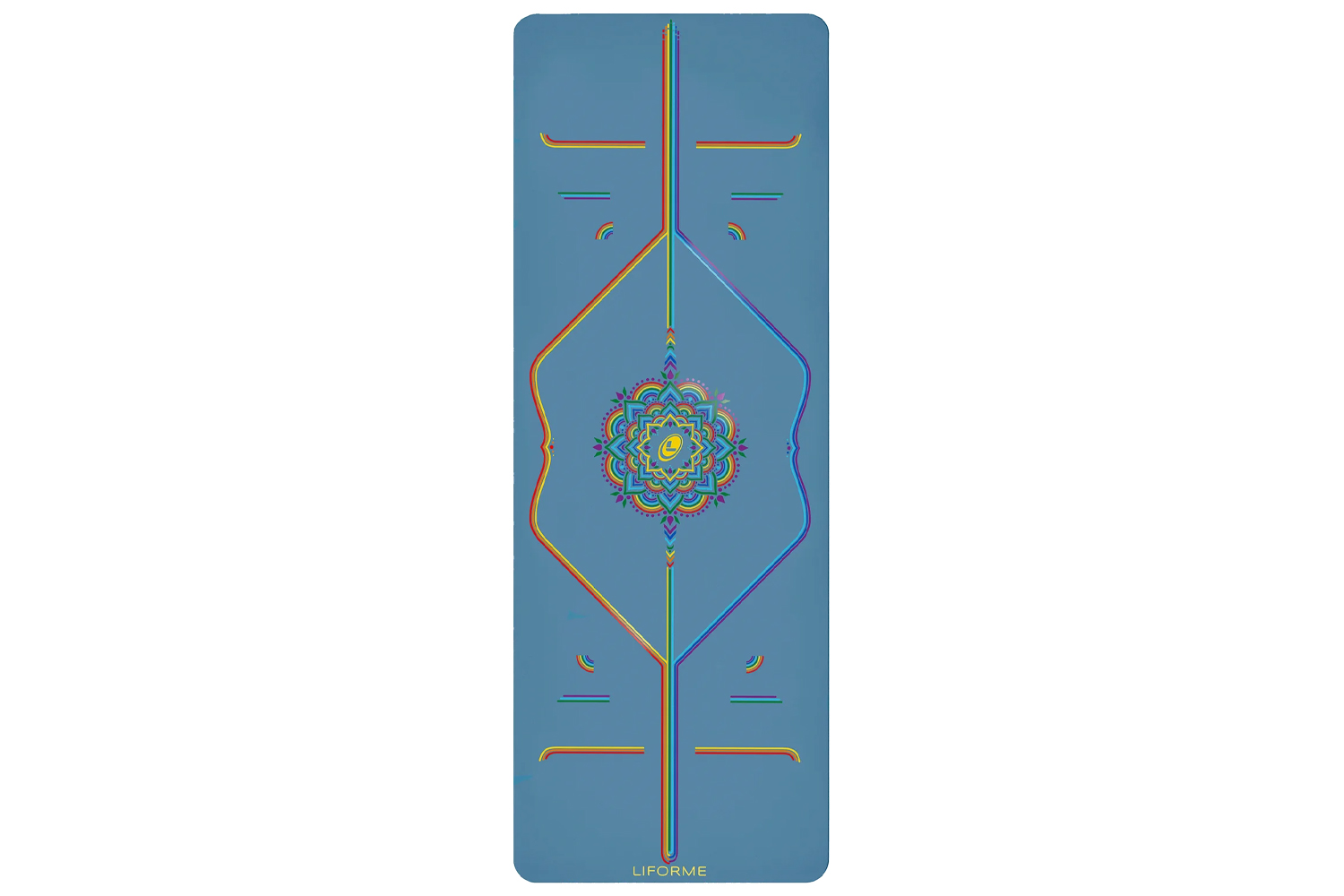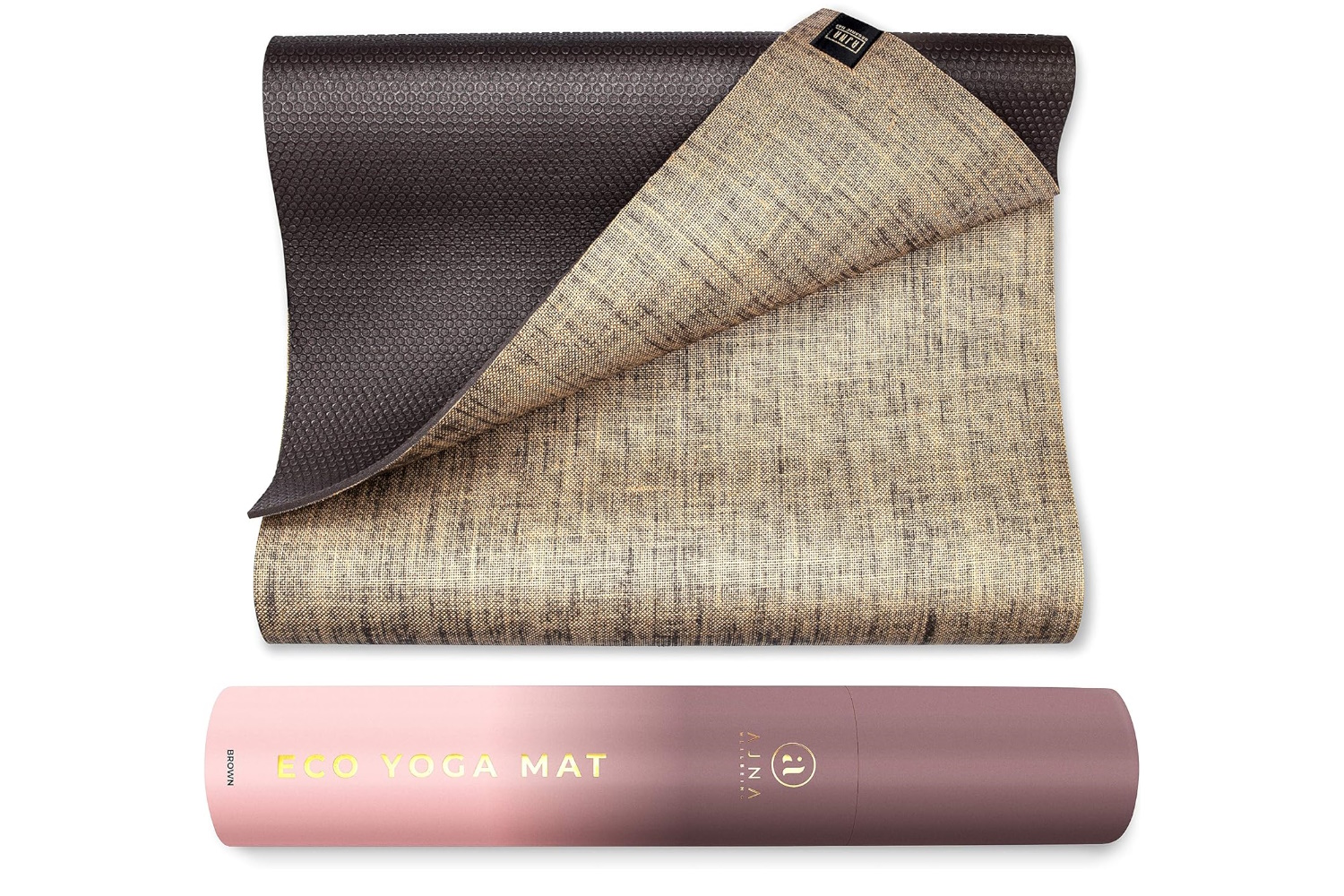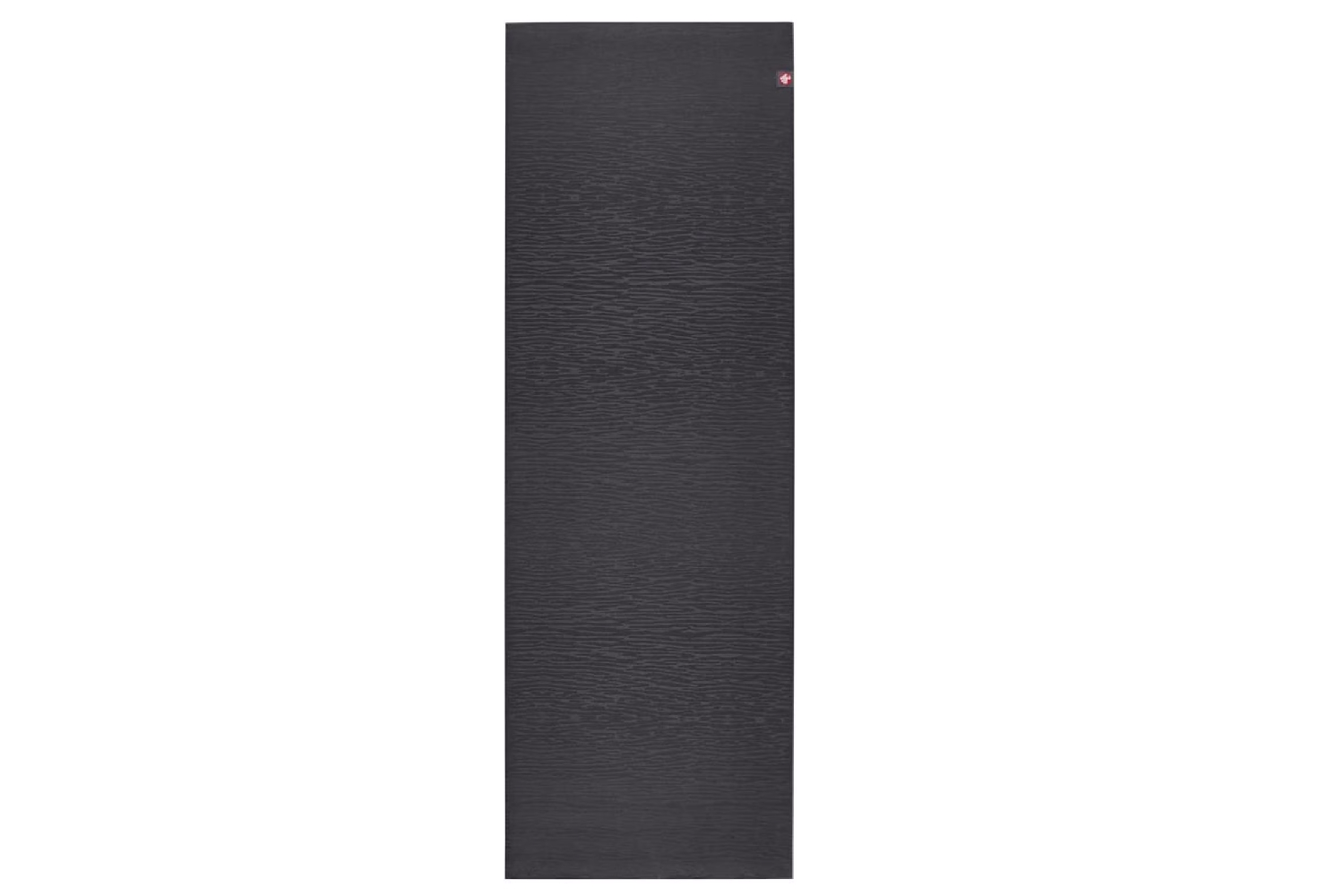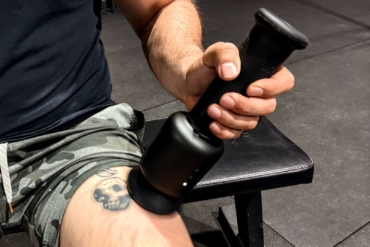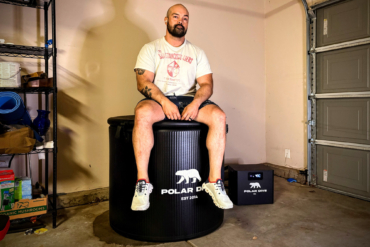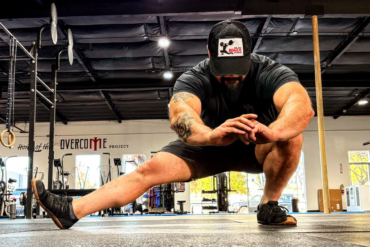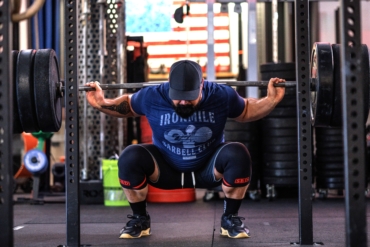Yoga mats may be similar in dimensions and thickness, but they’re not all the same. Just as there are numerous styles of yoga, there are also variations when it comes to mats, and what works well for you may not be ideal for someone practicing right next to you.
You might need a highly portable mat for travel or you’re looking for extra cushioning for your joints — for the latter, check out the Manduka PRO Yoga Mat. Love hot yoga? A mat that’s easy to clean and keeps you steady even with sweaty hands are likely to be your top priorities: Read over the Asivana Flux Cork Mat.
Editor’s Note: We updated our Yoga Mats buyer’s guide on October 21, 2025, with an assessment of our field-tested top picks and new awards.
The Best Yoga Mats of 2025
Manduka PRO
- Size: 71″ x 26″ (extra-long option is 85″ long)
- Thickness: 6 mm
- Weight: 7.5 lbs. (extra-long option is 9.5 lbs.)
- Material: 100% latex-free high-density cushion made from PVC
Pros
- Textured top and bottom layers
- Durable construction
- Available in an extra-long option
Cons
- Relatively heavy
- Expensive
Lolë Iglow Yoga Mat
- Length: 70″ x 24″ (180 cm x 61 cm)
- Thickness: 4 mm
- Weight: 1.8 lbs.
- Materials: PVC- and latex-free closed-cell thermoplastic elastomer
Pros
- Fully recyclable
- Travel-friendly
- Great price
Cons
- Not enough support for some
- Only comes in one size
Lululemon The Mat
- Size: 71″ x 26″
- Thickness: 5 mm
- Weight: 5.24 lbs.
- Material: 100% FSC-certified rubber
Pros
- Very grippy
- Nice design
- Ample cushioning
Cons
- Heavy
Asivana Flux Cork Mat
- Size: 72″ x 24″
- Thickness: 5 mm
- Weight: 7 lbs.
- Material: Cork upper layer, natural rubber lower layer
Pros
- Good grip
- Reversible
- Sustainable materials
Cons
- Heavy
- Can't be rolled tightly because cork might crack
- Takes time to break in
Yoloha Original Cork Yoga Mat
- Size: 72″ x 26″ (extra long is 80" x 26")
- Thickness: 6 mm
- Weight: 2.8 lbs.
- Material: Cork upper layer, foam lower layer
Pros
- Beautiful designs
- Lightweight
- Good grip
Cons
- Bit challenging to roll up
- Not reversible
- Expensive
Hugger Mugger Earth Elements
- Size: 72″ x 24″
- Thickness: 5 mm
- Weight: 2.4 lbs.
- Material: TPE (a rubber-like material made of thermoplastic elastomers)
Pros
- Durable
- Lightweight
Cons
- Not made of natural materials
Liforme Rainbow Hope Yoga Mat
- Size: 72″ x 26″
- Thickness: 4.2 mm
- Weight: 5.5 lbs.
- Material: Rubber base and eco-polyurethane top surface
Pros
- Lines for alignment
- Good cushioning
Cons
- Expensive
Other Stellar Yoga Mats for Your Practice
- Size: 72″ x 24″
- Thickness: 5 mm
- Weight: 3.4 lbs.
- Material: Organic jute fiber
Pros
- Eco-friendly
- Stylish designs
- Texture facing hands offers good traction
Cons
- Not as grippy as natural rubber
- Size: 71″ x 26″ (79" long option)
- Thickness: 5 mm
- Weight: 6 lbs.
- Material: Foam rubber composite
Pros
- Super nonslip
- Moisture absorptive
- Durable material
Cons
- On the heavy side
- Size: 68″ x 24″
- Thickness: 6 mm
- Weight: 3.2 lbs.
- Material: PVC
Pros
- Variety of designs
- Lightweight
- Affordable
Cons
- Slightly smaller than standard
- Not as durable as other brands
- Size: 68” x 24”
- Thickness: 5 mm
- Weight: 4.5 lbs.
- Material: Open-cell natural rubber
Pros
- Eco-friendly
Cons
- Heavier
- Not as slip-proof when wet
- Size: 72″ x 24″
- Thickness: 1″ (25.4 mm)
- Weight: 2.2 lbs
- Material: Small-cell dense foam rubber
Pros
- Extra cushioning
- Good stability
- Included carrying strap
Cons
- Slightly smaller than standard
- Bulky when rolled
- Not easily portable
- Questionable durability
- Size: 68″ x 24″
- Thickness: 2 mm
- Weight: 1.8 lbs.
- Material: PVC
Pros
- Compact
- Portable
Cons
- Minimal cushioning
- Smaller than average
- Retains creases
- Size: 71″ x 24″
- Thickness: 4 mm
- Weight: 4.5 lbs.
- Material: Natural tree rubber
Pros
- Great grip
- Lightweight compared to other Manduka mats
Cons
- Less cushion
- Potential lasting odor
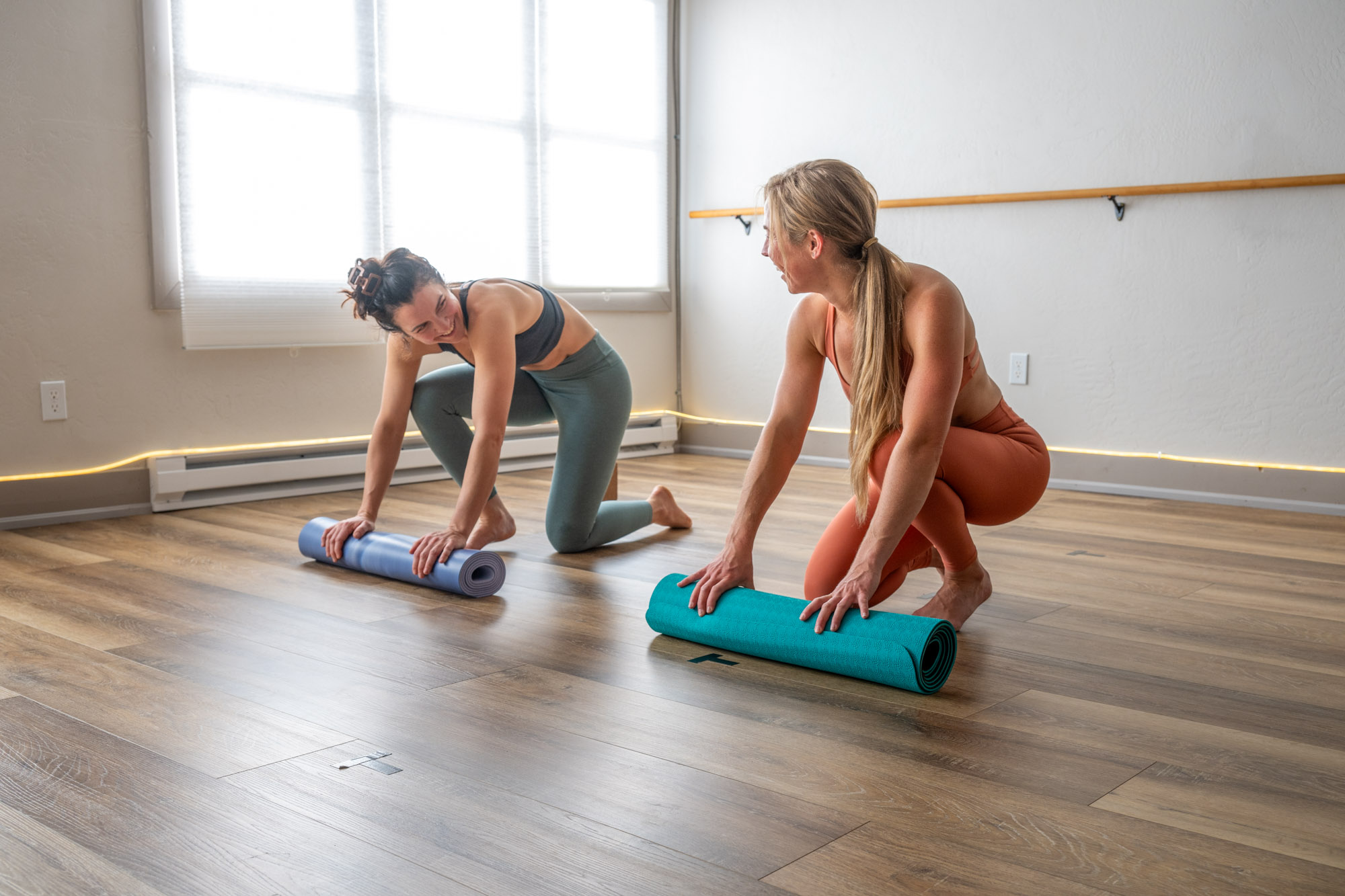
Yoga Mats Comparison Chart
| Yoga Mats | Price | Size | Thickness | Material |
|---|---|---|---|---|
| Manduka PRO | $138 | 71″ x 26″ | 6 mm | 100% latex-free high-density PVC |
| Lolë Iglow | $24 | 70″ x 24″ | 4 mm | PVC- and latex-free closed-cell TPE |
| Lululemon The Mat | $118 | 71″ x 26″ | 5 mm | 100% FSC Certified Rubber |
| Hugger Mugger Earth Elements | $74 | 72″ x 24″ | 5 mm | TPE |
| Myga Jute | $36 | 72″ x 24″ | 5 mm | Organic jute fiber |
| Liforme Rainbow Hope | $195 | 72″ x 26″ | 4.2 mm | Rubber base and eco-polyurethane top surface |
| Asivana Flux Cork | $92 | 72″ x 24″ | 5 mm | Cork upper layer, natural rubber lower layer |
| Yoloha Original Cork | $139 | 72″ x 26″ | 6 mm | Cork upper layer, foam lower layer |
| Manduka GRP Adapt | $94 | 71″ x 26″ | 5 mm | Foam rubber composite |
| Gaiam 6 mm | $35 | 68″ x 24″ | 6 mm | PVC |
| JadeYoga Harmony | $92 | 68” x 24” | 5 mm | Open-cell natural rubber |
| Retrospec Solana 1″ | $40 | 72″ x 24″ | 1″ (25.4 mm) | Small-cell dense foam rubber |
| Gaiam Foldable | $25 | 68″ x 24″ | 2 mm | PVC |
| Manduka eKO Lite 4 mm | $84 | 71″ x 24″ | 4 mm | Natural rubber |
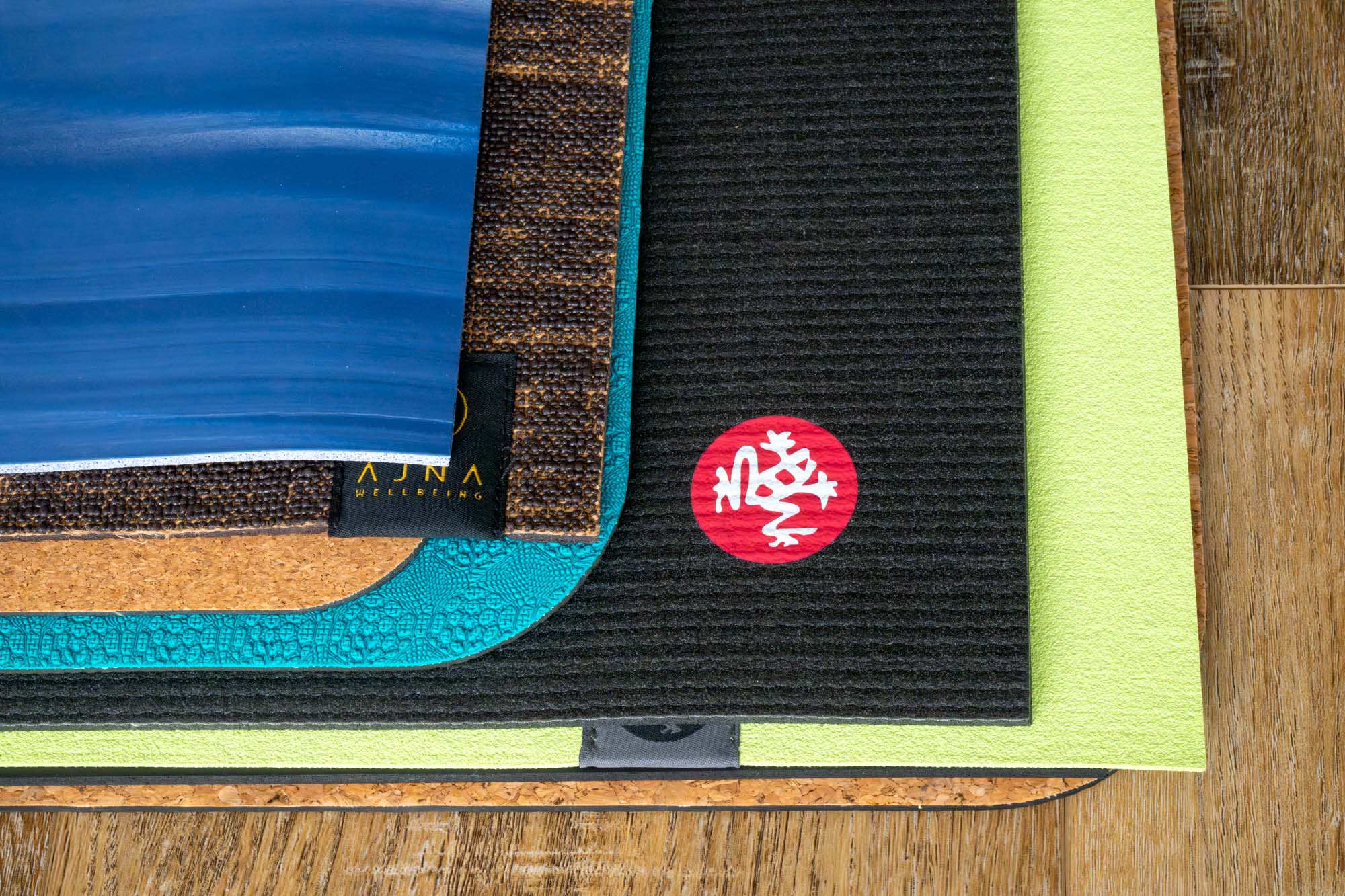
How We Tested the Best Yoga Mats
Our GearJunkie testers are fitness buffs with a lot of experience and expertise to share including with yoga.
Our Expert Testers
Elizabeth Millard, our lead tester, has been a yoga teacher for 15 years and leads classes from the art gallery to summer camps and breweries. She’s guided students with numerous types of injuries through modifications that can make their yoga more accessible and helped first responders use yoga as a way to address and work through trauma and stress from their work. Like every yoga student, she’s still learning — and will be her entire life — but her experience with yoga and the breadth of mats she’s used and seen students use gives her valuable insight into the nuances of the mats tested here.
GearJunkie Senior Editor Morgan Tilton tested yoga mats, as well as yoga instructor and ReWild Wellness owner Ashley King.
Contributor Mary Murphy had a personal journey with yoga that started after a severe back injury and dove into testing mats for GearJunkie.
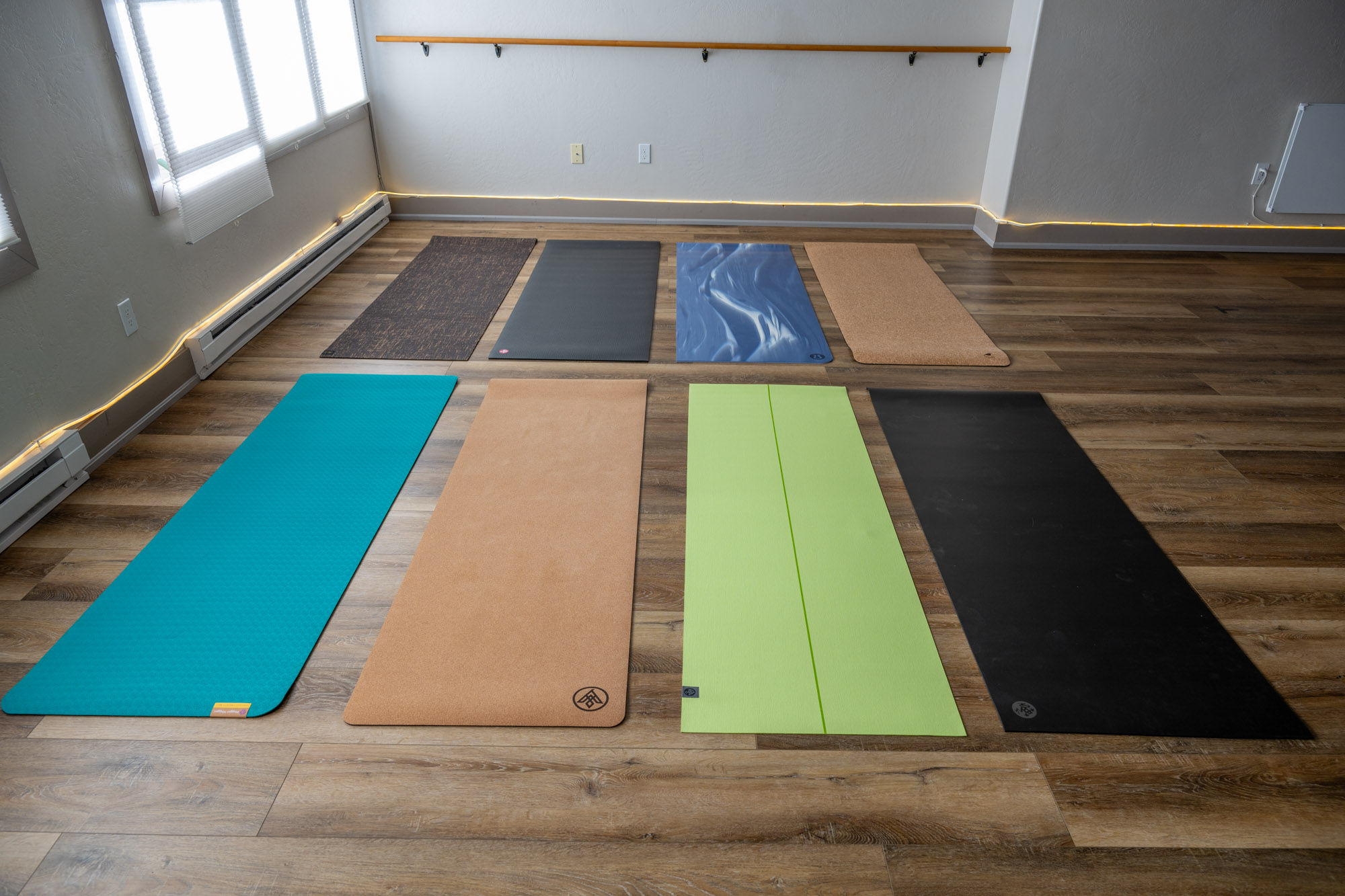
Our Testing Grounds
For each of the mats tested here, Millard put every mat to the test under three different environments: Outdoor on grass, in a hot yoga studio, and in a home setting. This allowed each mat to be assessed based on how well it functioned with different grip needs as well as comfort and its ability to be stable.
Based in Crested Butte, a primary location for yoga mat testing for Morgan Tilton and Ashley King is CB Power Yoga.
Our Testing Process
In so many different settings, and with a variety of students, Millard has learned that having an appropriate mat makes a significant difference in how well people can practice. When the mat offers the type of texture and cushioning needed, students can feel more confident, and that translates into their experience with yoga.
She tested each mat with multiple student types in mind, considering what would be needed for a class that is fast-paced and sweaty, versus one that’s more restorative and offers longer holds for each pose.
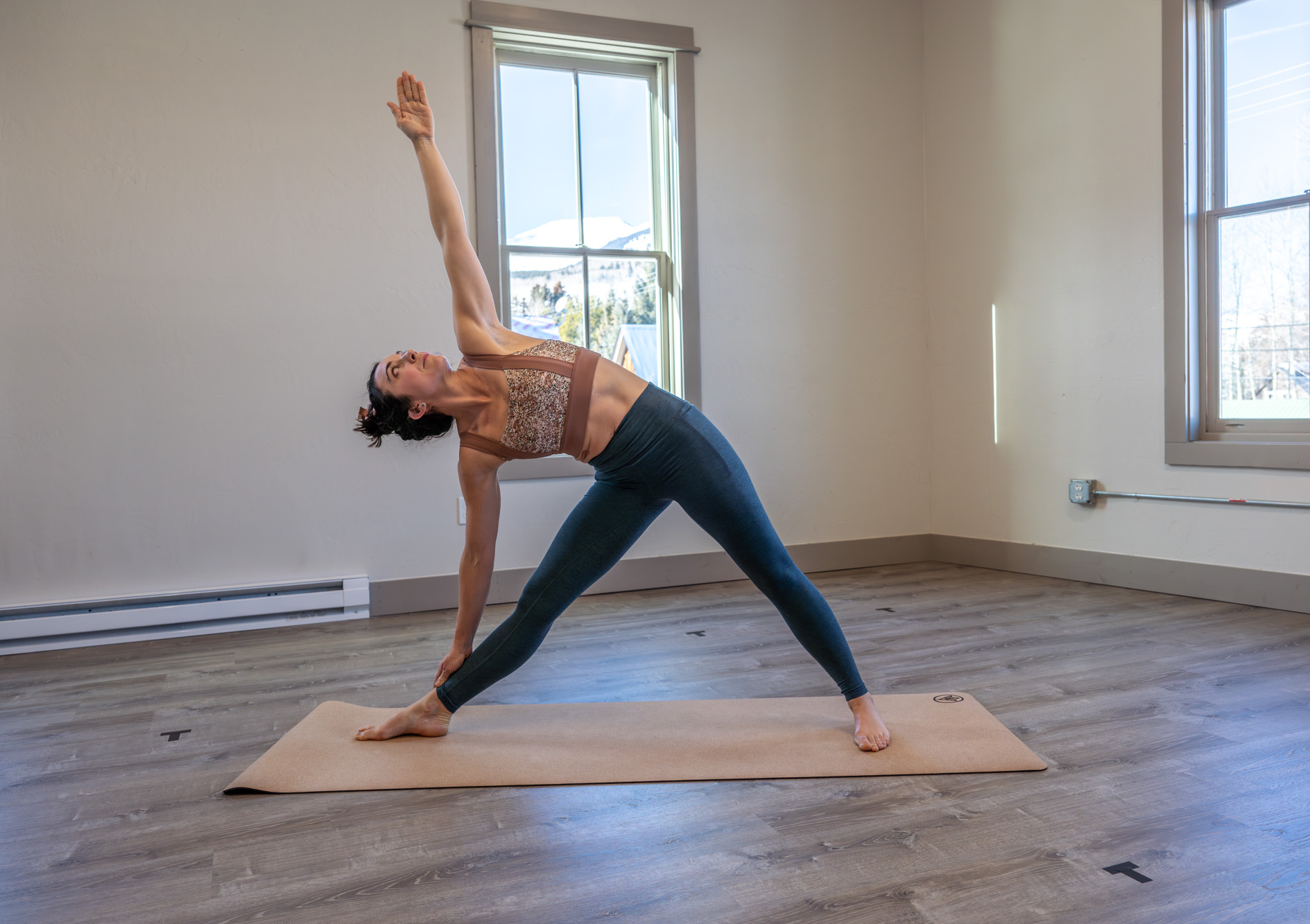
Buyers Guide: How to Choose a Yoga Mat
There are quite a few different options in terms of yoga mat materials. You may notice as you search that many have multiple materials for the top, bottom, and inside. That’s because the outside layers focus on grip and texture, while the inside is responsible for providing cushioning and support.
Material
Your choice of material for a yoga mat should depend on where you do yoga and what kind of yoga you do. For example, if you like hot yoga, the Asivana Flux Cork Mat will keep your mat dry even as you sweat. Options for material range from cork and jute to sustainable rubber and sometimes a blend of these materials. Here are some examples from the mats featured above:
PVC
Polyvinyl chloride (PVC) is a synthetic material fashioned out of plastic that’s utilized for a number of uses, including gym flooring and yoga mats. Although it’s not a natural material, PVC is known for longevity and durability, so these mats tend to last longer than natural options like jute or cork. Example: Gaiam Foldable mat.
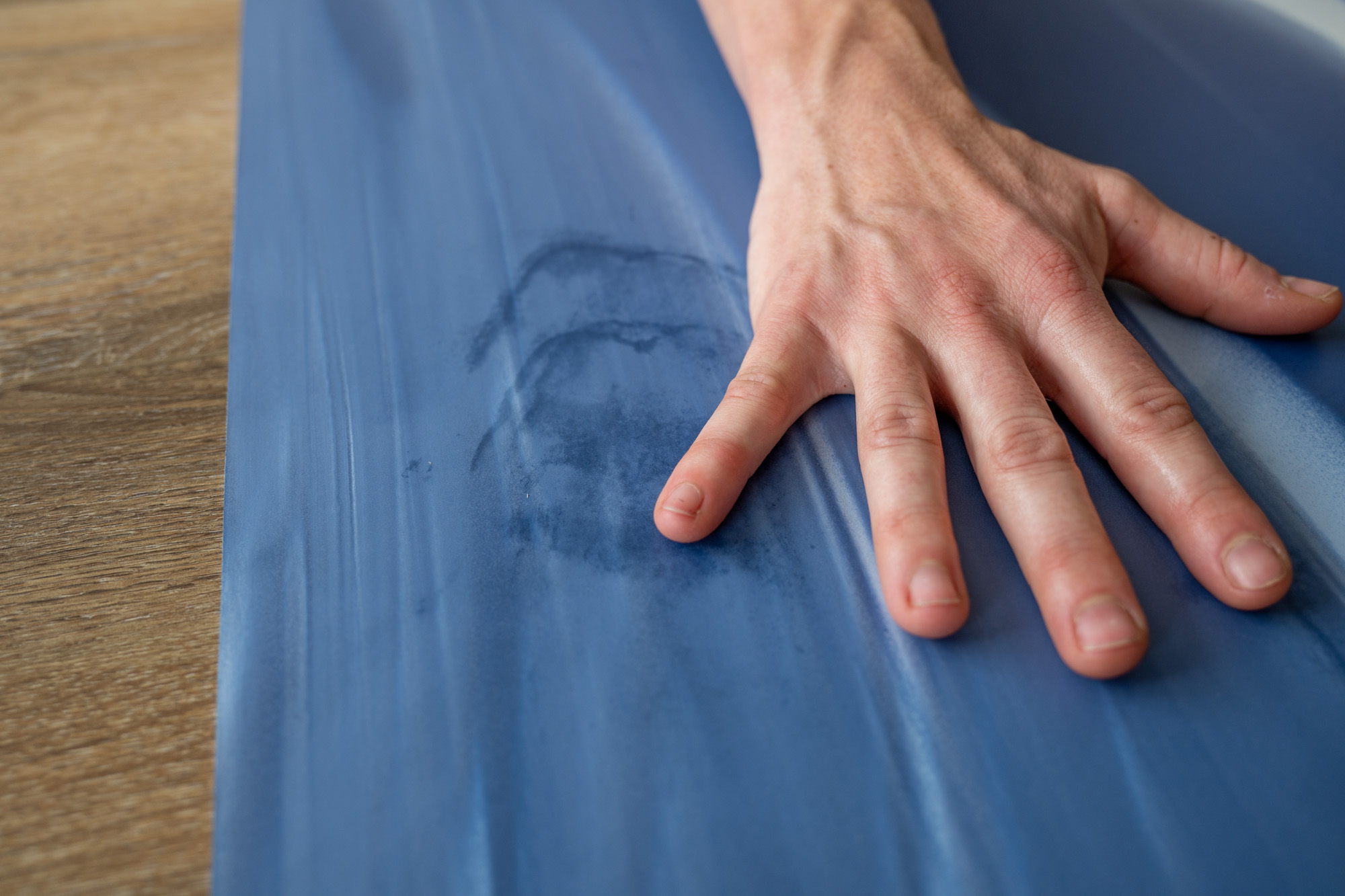
FSC Rubber
The FSC certification is given to products that utilize sustainable forest management practices, so a mat with this designation is considered an environmentally friendly option. Basically, it means the rubber was sourced in a way that adheres to specific sustainable standards. Example: The Mat by Lululemon.
Jute
Made from the fibers of the jute plant, a jute yoga mat can be considered to be fashioned out of natural material. Example: Jute Yoga Mat.
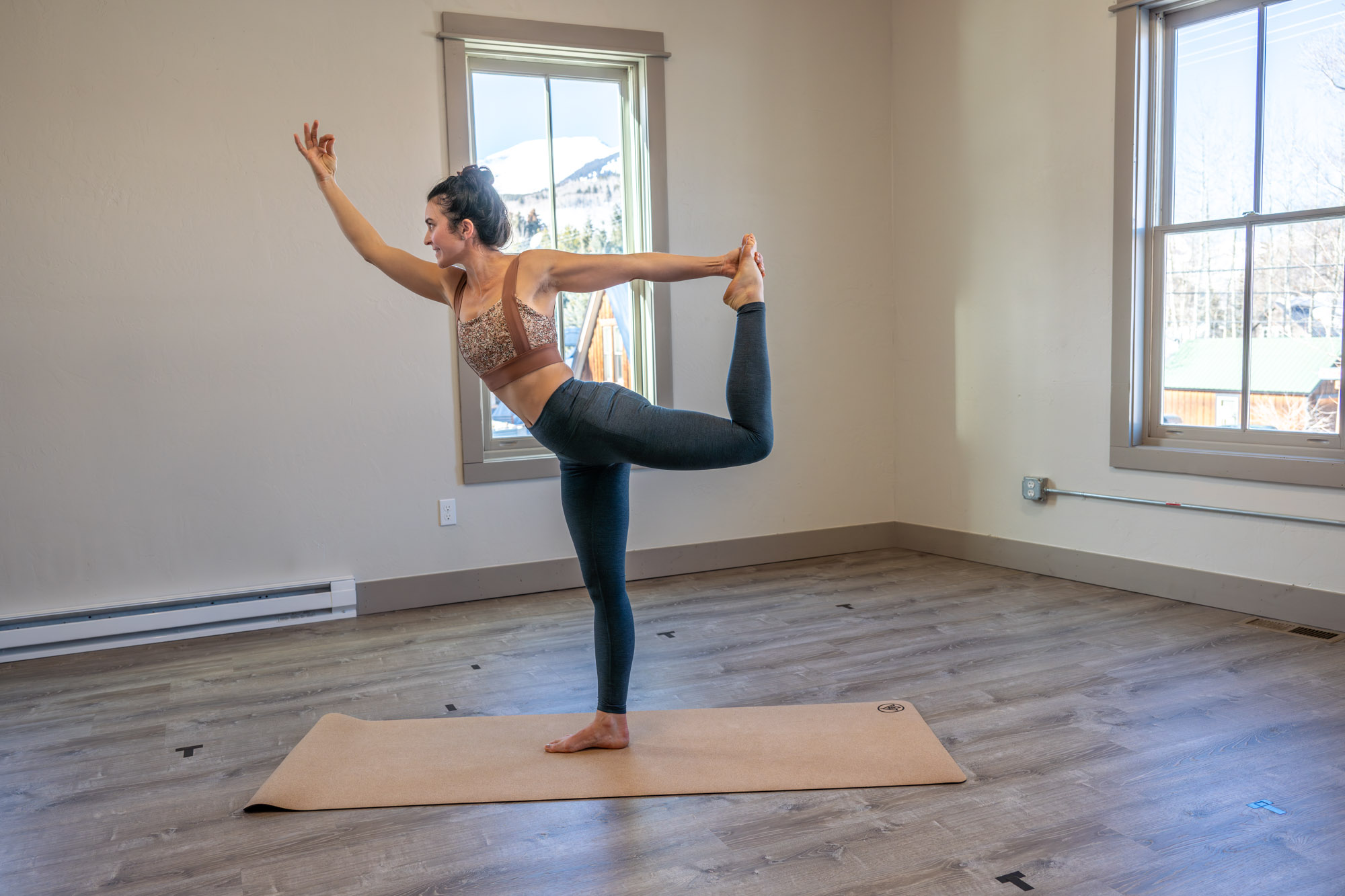
Cork
Similar to jute, cork is a natural fiber since it’s produced from the bark of certain trees. It’s considered sustainable since trees themselves are not cut down and harvested; rather, the bark is stripped throughout the life of the tree. Example: Asivana Flux yoga mat.
Blend of Materials
Many mats have a blend of materials, particularly reversible ones. For instance, there may be cork or jute on one side and then a type of rubber or foam on the other side. This can be helpful if you prefer a different material for one class over another, such as jute or cork in hot yoga, but a more cushioned foam in a restorative class. Example: Yoloha B Natural yoga mat.
In general, it’s impossible to say whether one material is better than another, or even grippier than another, because they are all very similar in terms of durability, grip, and density. Because of that, choosing a mat comes down to individual preference — some people like the feel of cork, for example, while others might prefer a mat with FSC rubber.
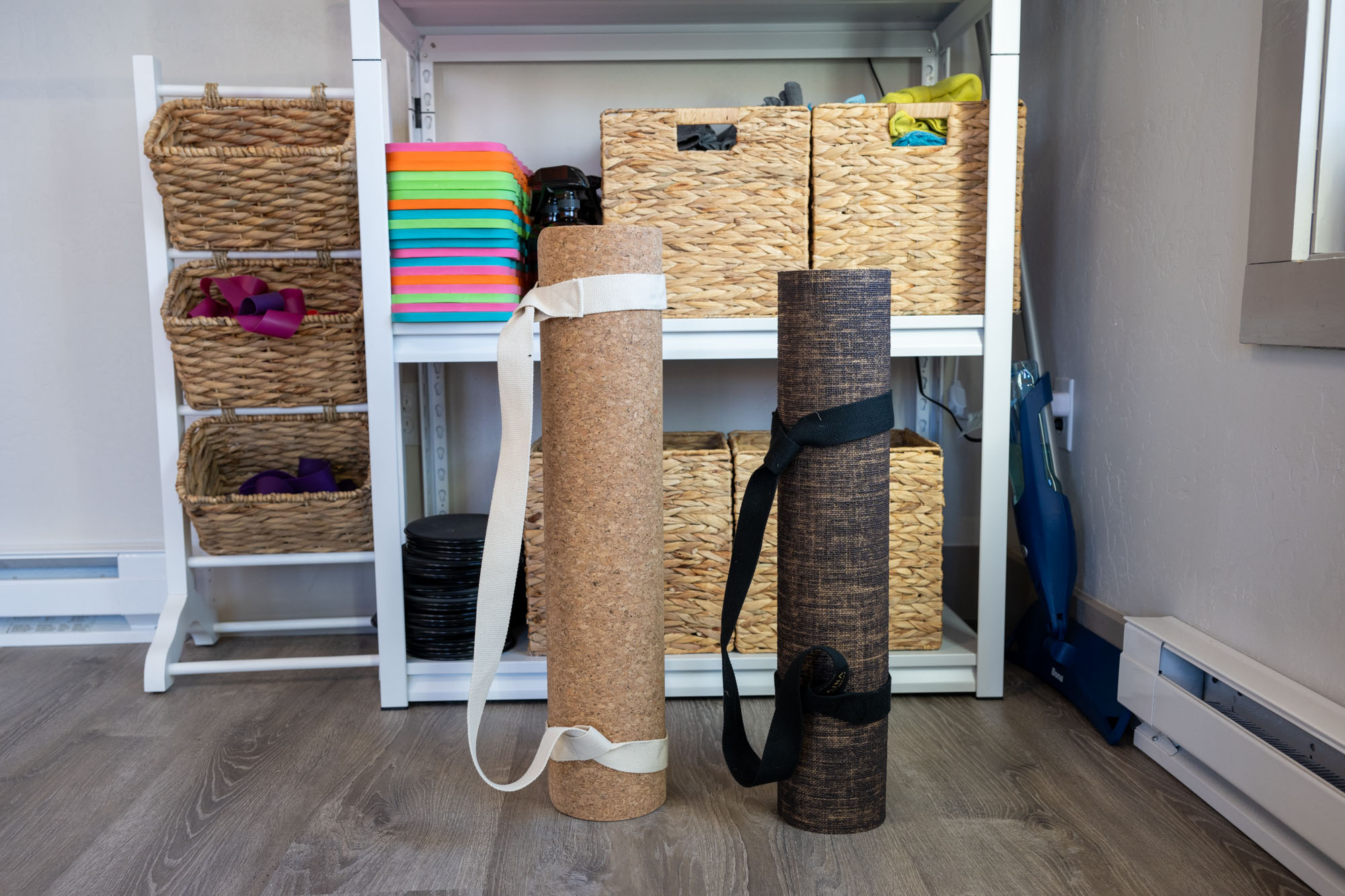
Thickness
While many yoga mats are either 5 or 6 mm, they range from 2 mm all the way up to an inch. The thicker mats are best for people who need extra support and those struggling with joint pain or chronic injuries.
If you are aiming for maximum comfort, a thicker mat will provide that. Moreover, if you frequently practice restorative yoga, in which you hold poses for longer, a more cushioned mat will keep you comfortable.
The thinner the mat, the more compact it will be. If you enjoy bringing your yoga practice outdoors or if you frequent classes at a gym, you may want a compact and portable mat. When there is less cushion, the mat tends to provide more stability. Although, if you are on rough terrain, you may feel it. Here are the densities of our lineup of yoga mats:
- Gaiam Foldable Mat: 2 mm
- Lolë Iglow: 4 mm
- Manduka eKO Lite: 4 mm
- Liforme Rainbow Hope Yoga Mat: 4.2 mm
- Lululemon The Mat: 5 mm
- Hugger Mugger Earth Elements: 5 mm
- Myga Jute Yoga Mat: 5 mm
- Jade Harmony: 5 mm
- Asivana Flux Cork Mat: 5 mm
- Manduka GRP Adapt: 5 mm
- Gaiam 6 mm: 6 mm
- Manduka Pro: 6 mm
- Yoloha B Natural Non Slip Cork: 6 mm
- Retrospec Solana: 25.4 mm
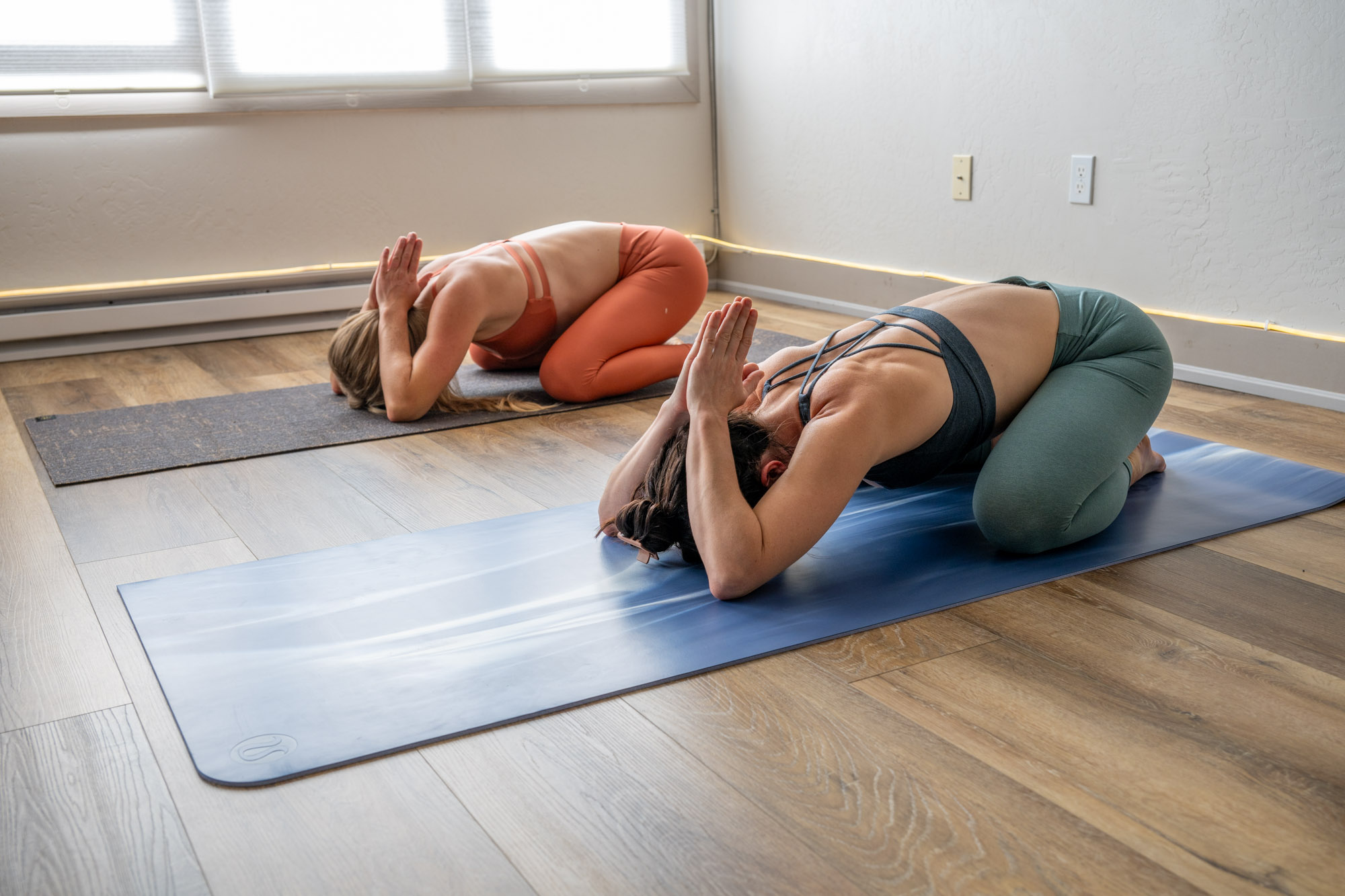
Firmness or Density
One quality that goes hand-in-hand with thickness is firmness. As you saw in our recommendations, yoga mat materials and thickness are two features that vary a lot and impact the firmness and stability you will get from your mat.
If you have ever gone to a fitness class at a gym, you probably noticed that there are different mats for yoga and other exercises like Pilates or high-intensity interval training (HIIT). This is because certain yoga poses can actually be more difficult with an overly cushioned mat.
If you primarily practice more meditative or restorative yoga types, featuring long-held and restful poses often on the back or knees, an extra supportive mat can protect your joints and spine from fatigue.
For others practicing more core-focused, aerobic yoga with fast transitions between poses, a denser mat will protect you from slipping or overextending in a movement.
Dense foam mats, natural rubber mats, and mats with harder top layers are all good options for ensuring enough stability and protection for your joints as you move through your practice.

Length
Most yoga mats tend to be right around the 6-foot — or 72-inch — mark. If you are shorter, you may opt for something a bit smaller, like the Gaiam or Jade mats, which are 68 inches long.
It is not bad to have extra room on your mat, though, unless you are concerned with compactness. In fact, we like having extra space to stretch back and step forward without falling off the mat.
If you are taller, we would definitely recommend finding an extra-long mat. Otherwise, you will often have your feet hanging off the end. Depending on where you practice, this could be uncomfortable or even unsafe.
For a more spacious option, be sure to check out the Manduka PRO Yoga Mat, which has an extra-long option that extends 85 inches (7’1″).
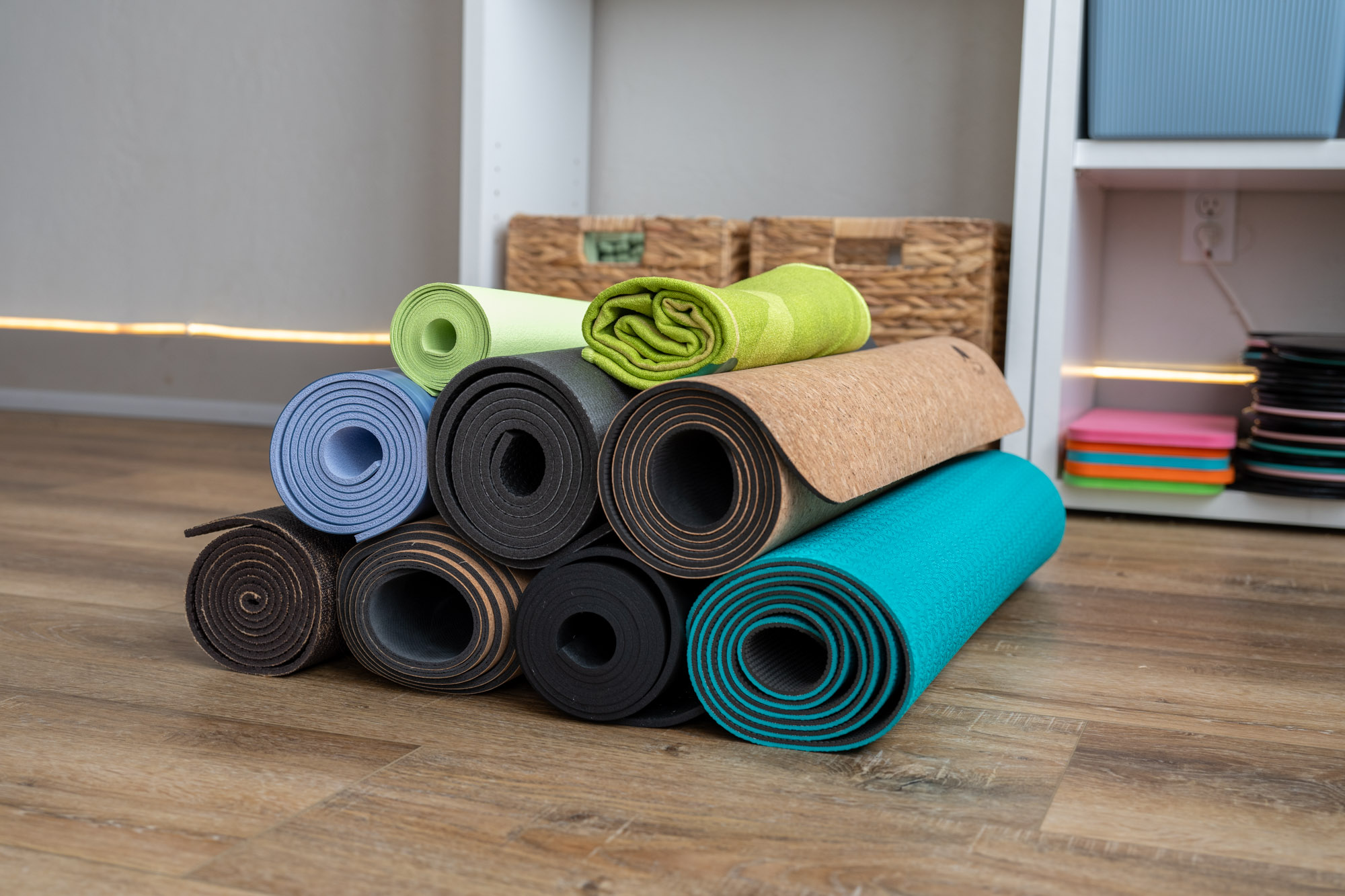
Width
The width of yoga mats is even more uniform than the length, with most clocking in at 24 or 26 inches wide. This tends to be accommodating enough for most people, but you may prefer something wider if you practice a lot of restorative yoga and stretching.
If you are looking for the most compact and portable mat, the Gaiam Foldable Mat folds in half to be only 12 inches wide.
- Gaiam Foldable Mat: 24″
- Gaiam 6 mm: 24″
- Jade Harmony: 24″
- Lolë Iglow: 24″
- Manduka eKO Lite: 24″
- Retrospec Solana: 24″
- Hugger Mugger Earth Elements: 24″
- Myga Jute Yoga Mat: 24″
- Asivana Flux Cork Mat: 24″
- Yoloha B Natural Non Slip Cork: 26″
- Manduka GRP Adapt: 26″
- Manduka Pro: 26″
- Lululemon The Mat: 26″
- Liforme Rainbow Hope Yoga Mat: 26″

Grip
Grip is a very important feature of a yoga mat, and for many people, it’s the top consideration when choosing a mat. You want to choose a yoga mat that is textured enough not to be slippery, yet smooth enough to be comfortable. When holding a pose — on your forearms, for example — an overly textured mat could prove uncomfortable and irritating to your skin. Overall, the grip of a mat can also change your sensory experience of a yoga class. For instance, if you feel like your mat is not grippy enough, it can sabotage your confidence in getting into different poses.
If you prefer a smooth mat but still need that stickiness factor, you should consider the Manduka GRP Adapt.
It is also important to note the texturing on the bottom side of the mat. Many quality yoga mats have some nonslip material on the bottom, so the mat does not slide out from under you. If you often practice in a carpeted room, be sure to get an extra-textured mat that will keep you safe and sturdy while transitioning between poses.
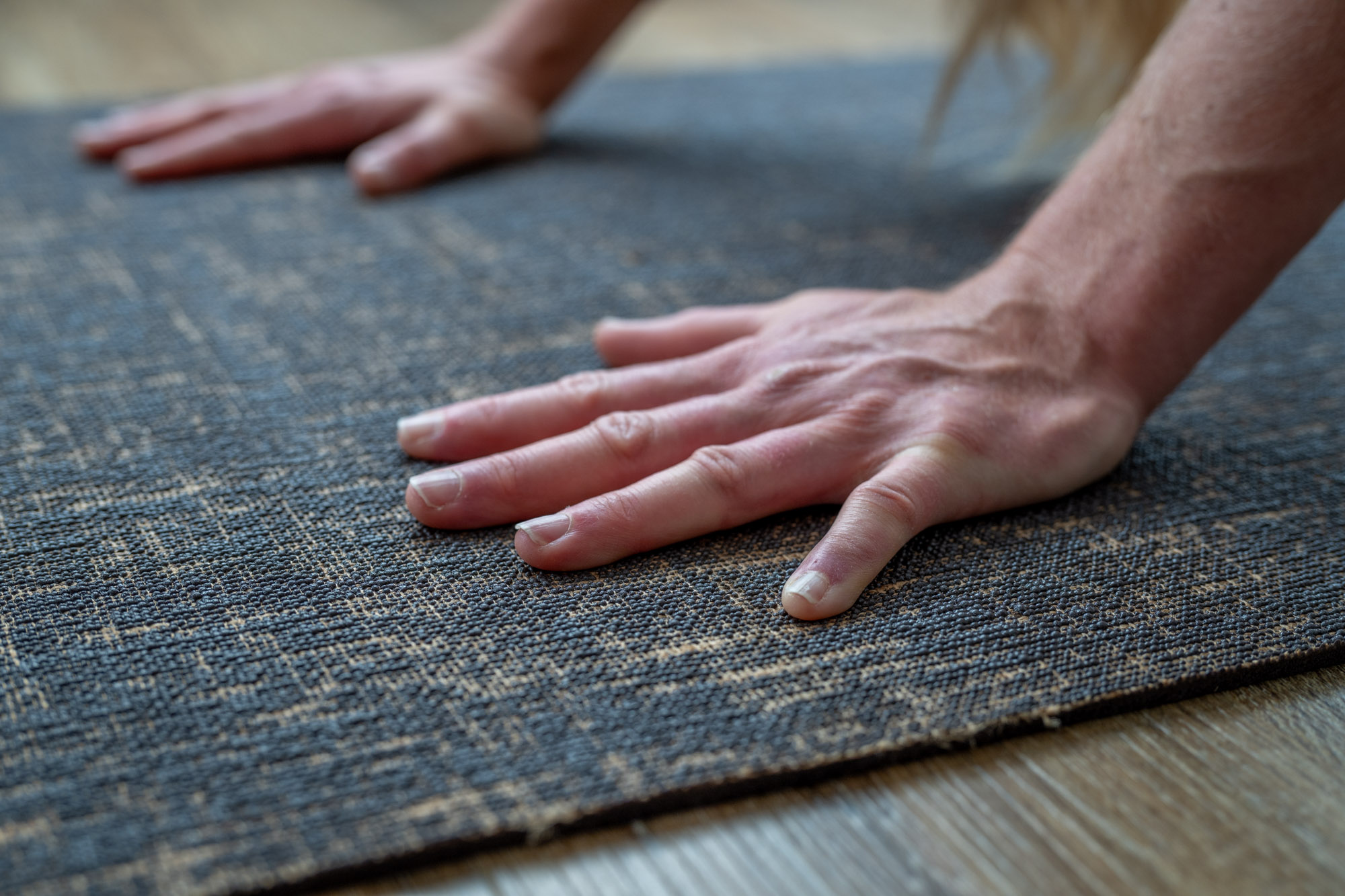
Sustainability
If you are searching for an eco-friendly yoga mat, many manufacturers focus on this as an attribute, so it’s not hard to find sustainable materials used. For example, the Yoloha B Natural Non Slip Cork mat is partially made from sugarcane that’s grown in poorer soil, which helps support the communities where it’s cultivated.
There are also numerous yoga mats fashioned from sustainably harvested tree rubber as well as biodegradable mats along with options produced via a zero-waste production process.

Portability
Unless you exclusively practice yoga at home, you will likely transport your yoga mat from time to time. Keep this in mind as you consider the size of the mat: If you travel with your mat often, the one-inch-thick Retrospec Solana 1″ might prove cumbersome. The compactness of folding mats might be a huge factor in your decision.
Another helpful feature for your ultimate enjoyment of the mat is the included accessories. Carrying straps for yoga mats can cost around $20 or more. If you want added value for your purchase, the recommended mats by Retrospec and Ajna come with included straps. In terms of travel, there are only two options on the list above that would be easy to pack: the Gaiam Foldable and the Gaiam 6 mm.
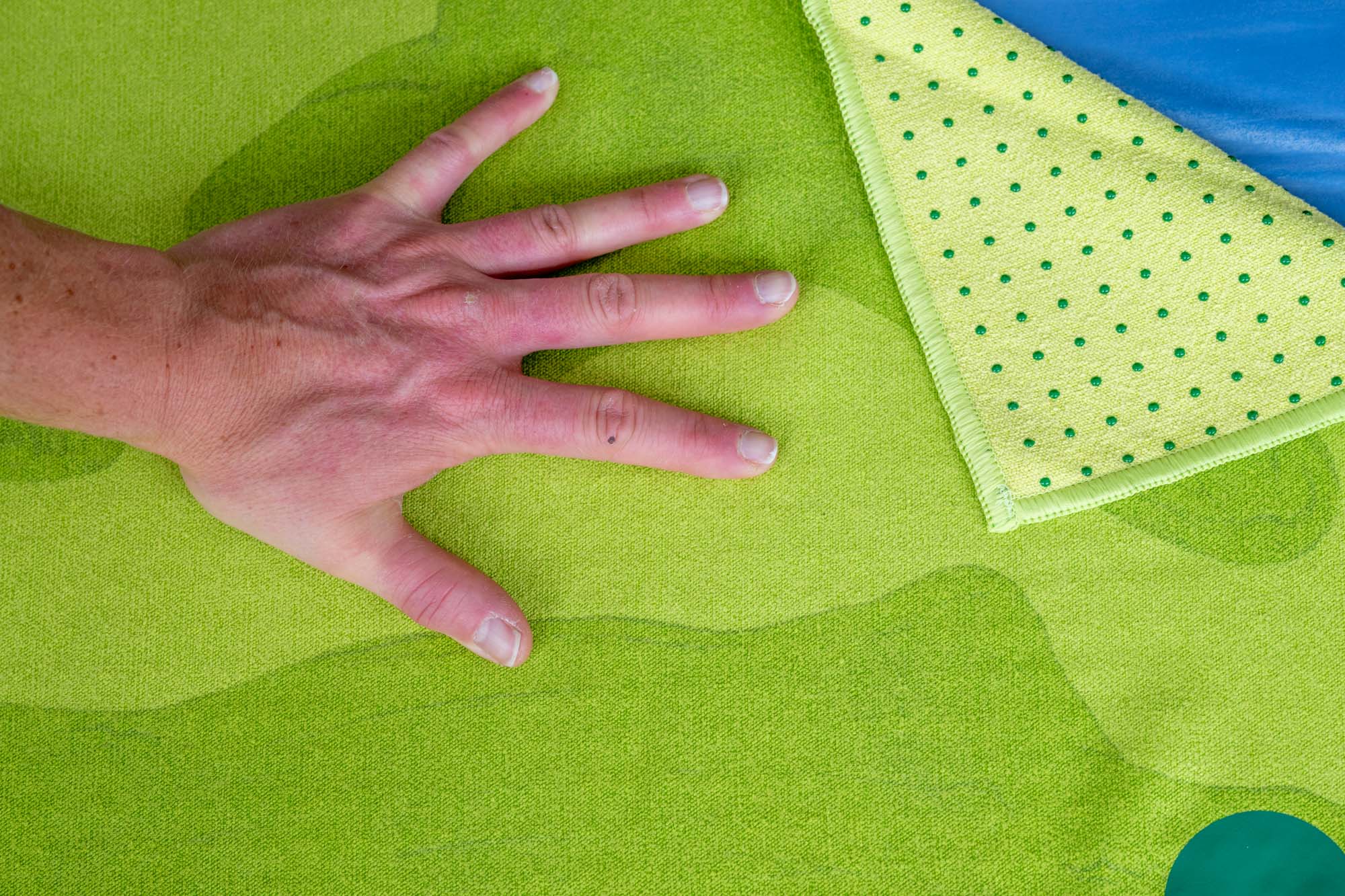
Yoga Mat Accessories
Apart from a carrying case or strap that can fit securely on your mat, you usually don’t need much more for a class. However, one accessory that some people like for a hot yoga class is the Manduka Yogitoes Yoga Mat Towel ($68). This might seem spendy for a towel, but it’s more than an option for wiping away sweat. The towel has a grippy side that is put down on your mat, as well as an absorbent side for your practice. Not only does it assist with helping you maintain your poses, but it can also spare you from having to clean your mat thoroughly after every hot yoga class.
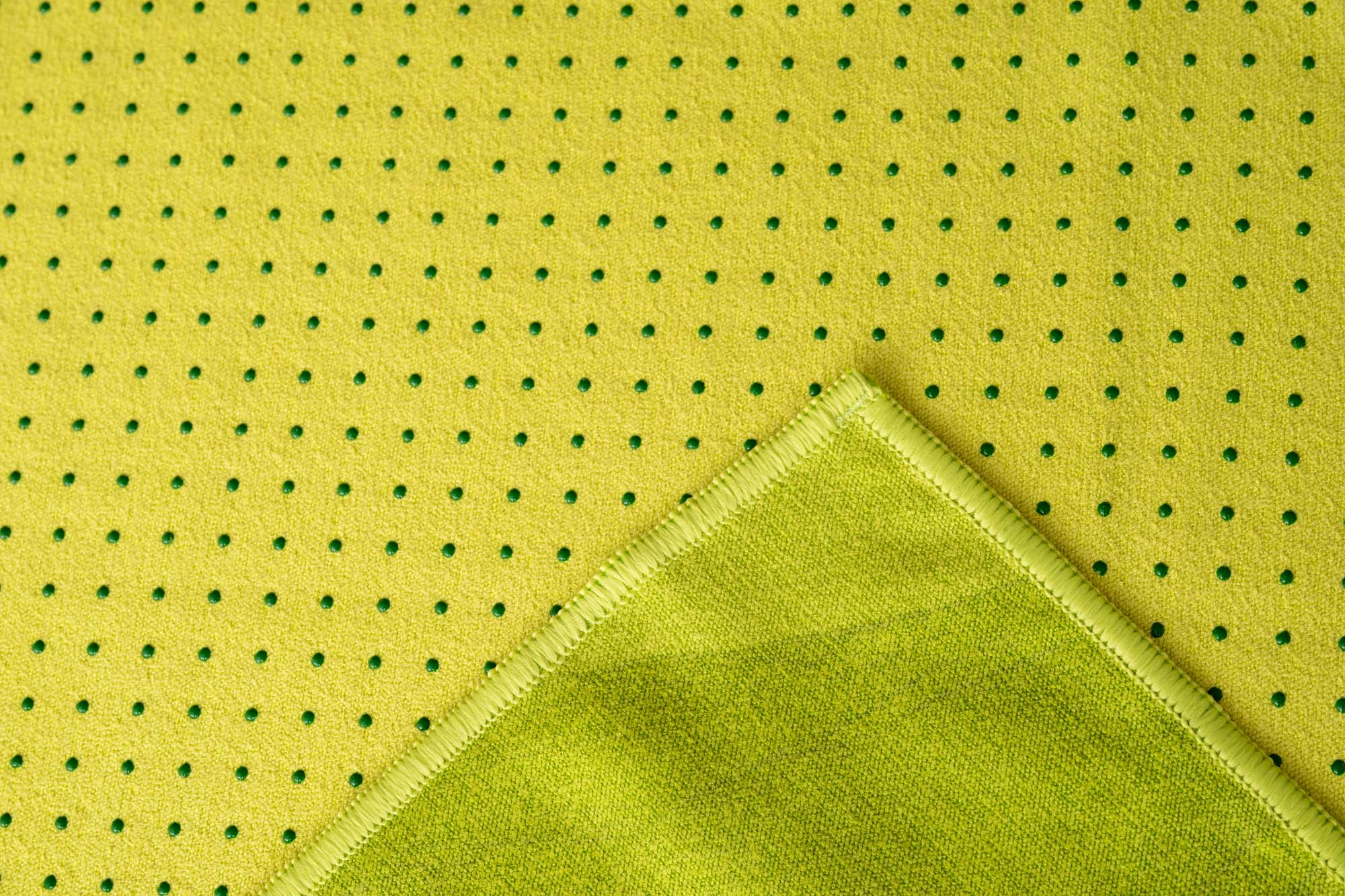
How to Clean
It is a good idea to clean your yoga mat after each use. You can wipe the mat down with a damp cloth and hang it up to dry if it’s been lightly used or you didn’t sweat during class. If it needs a more thorough cleaning, you can use a non-scented, mild soap mixed with water and wash it down that way. Some products that are designed specifically for yoga mats include:
- Manduka Yoga Mat Wash and Refresh ($12)
- Calia Yoga Mat Wash ($15)
- Jade Yoga Best Natural Yoga Mat Cleaner ($13)
- Asutra Yoga Mat Cleaner ($17)
Keep in mind that you should always let your yoga mat dry thoroughly before rolling it up for storage, whether you’re using a DIY soapy solution or a yoga cleaning product. Otherwise, you will likely come back to find a foul odor and potentially even some mold.
You can use an antibacterial wipe for some mats, while others suggest soapy water. It is essential to read the instructions for your particular mat, as cleaning procedures depend significantly on its materials.
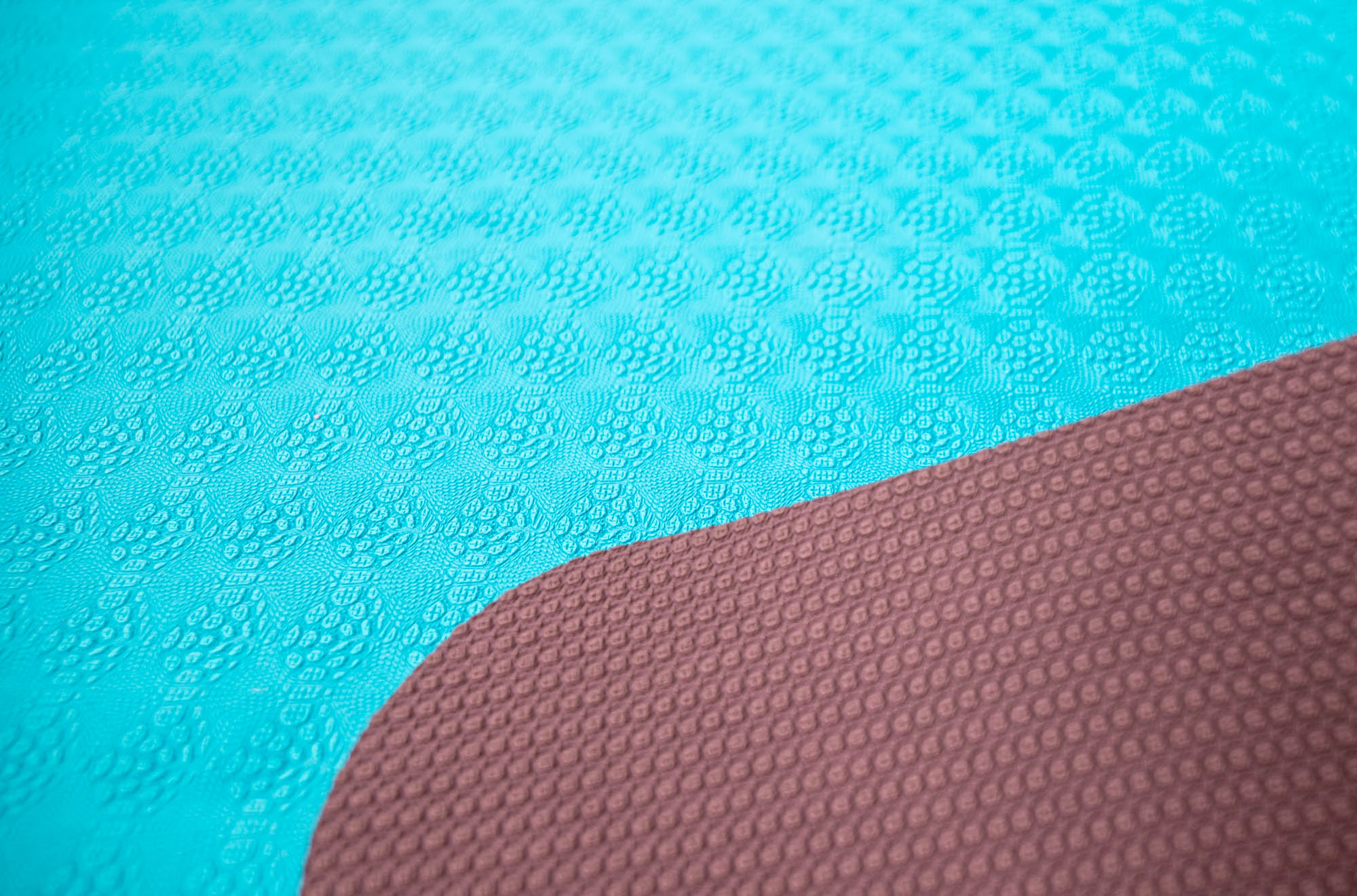
Price & Value
Pricing for a yoga mat involves many considerations, and there’s a wide variation, from $24 for the Lolë Iglow Yoga Mat to $195 for the Liforme Rainbow Hope mat.
Budget Yoga Mats
Similar to other types of products, price can be indicative of durability and quality.
Options like the Lolë Iglow Yoga Mat ($24) and Gaiam Foldable Mat ($25) are leaner and less supportive, so they cost less as a reflection of the material output. However, these mats can be a great choice for an extra mat that you keep in the car or a travel mat, or a mat for beginners.
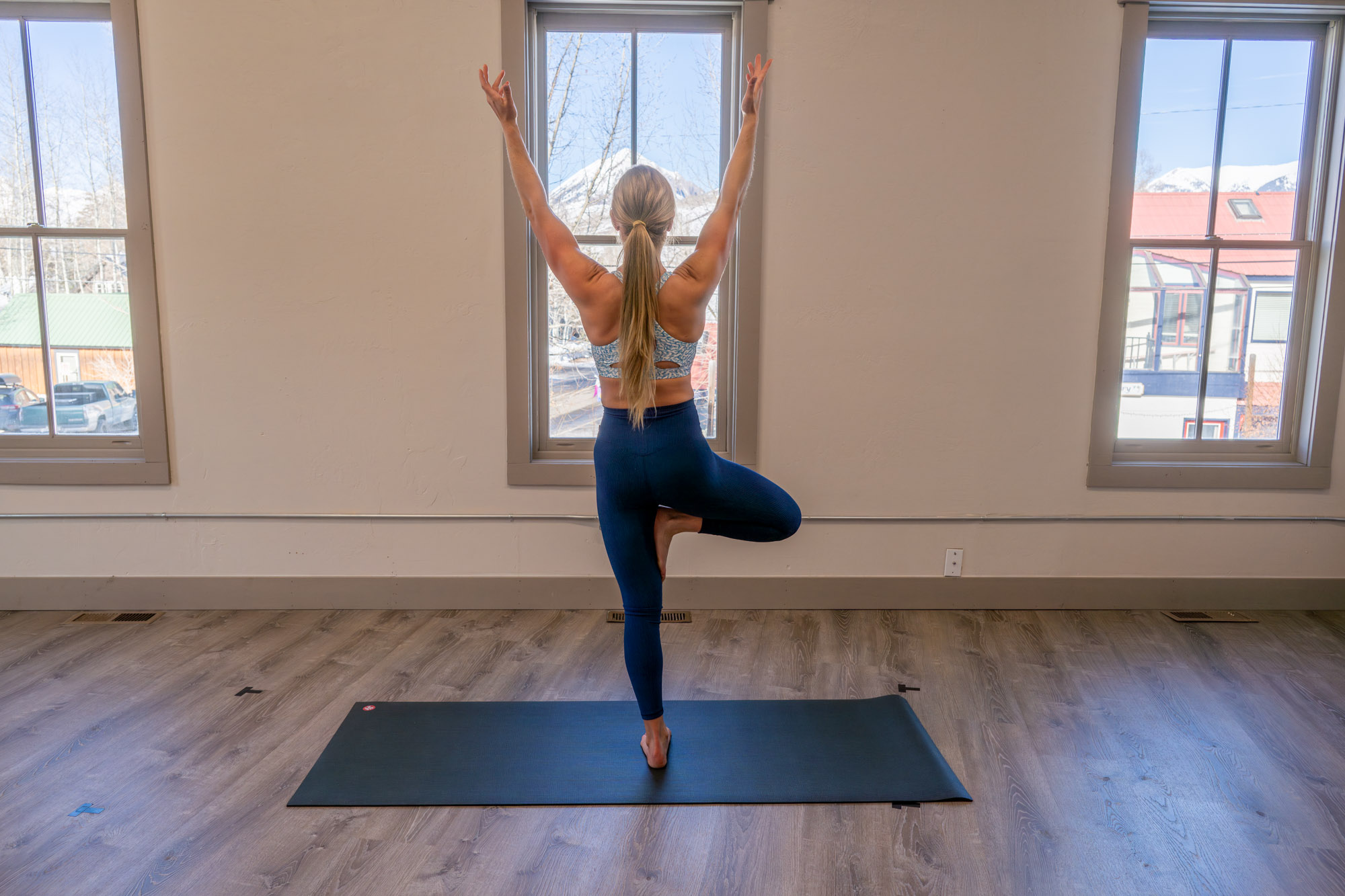
Mid-Tier Yoga Mats
However, it can also be part of what makes a mat more sustainable. For example, mats made from non-natural materials such as PVC tend to be less expensive than mats with more environmentally friendly materials like cork and FSC rubber, which are more expensive to source. The Asivana Flux Cork Mat ($92) falls in this zone.
Premium Yoga Mats
Coming in at the top, the Liforme Rainbow Hope Yoga Mat ($195) has a rubber base and eco-polyurethane top. And the Manduka PRO Yoga Mat ($138) is 100% latex-free, and offers a high-density cushion made from PVC at a 6 mm thickness, so the materials are higher end and more robust. In another wing, the Yolohana Original Cork Yoga Mat ($139) is made of cork but costs more than the Flux Cork Mat due to the foam lower layer and longer length.
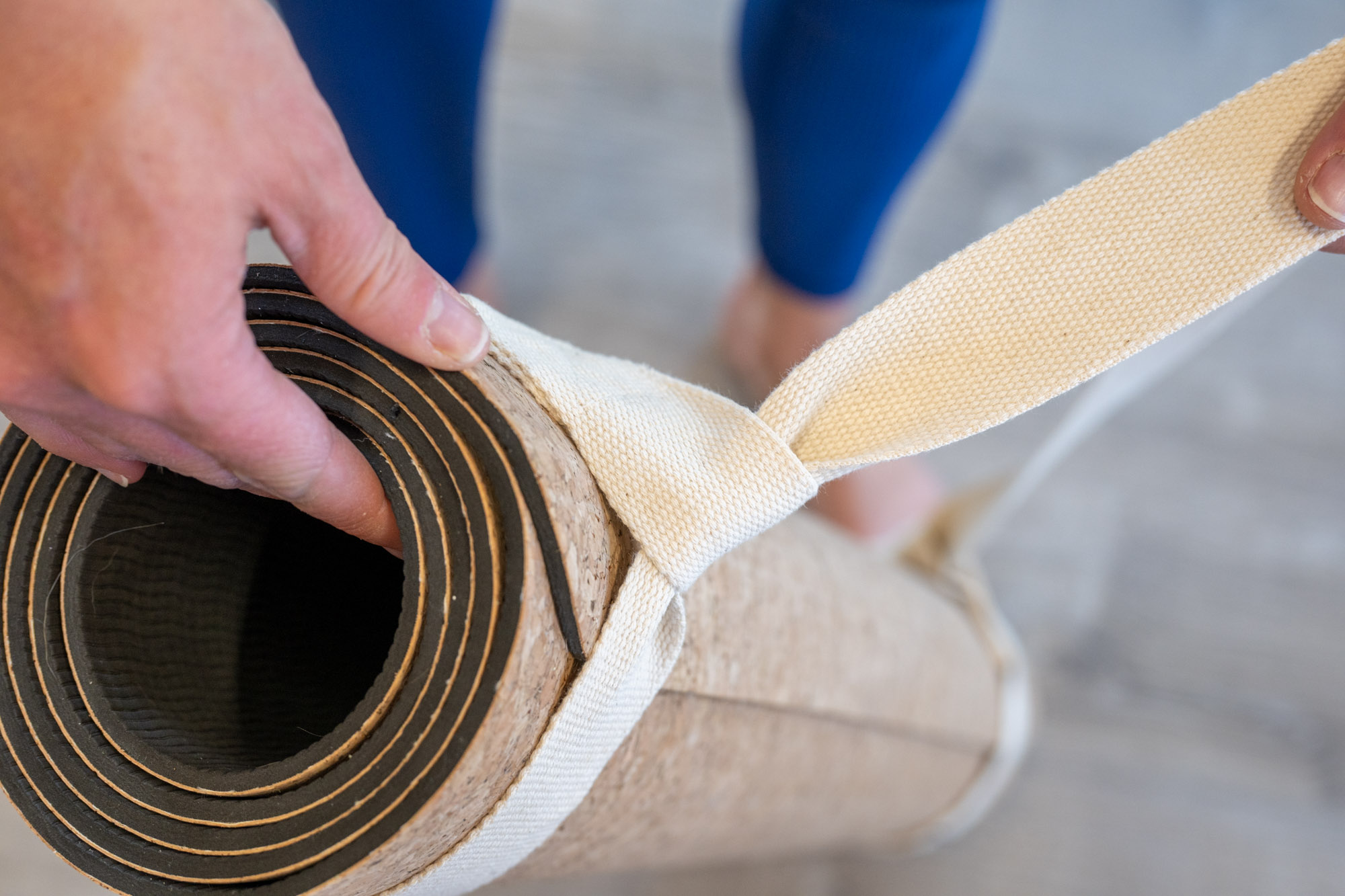
Frequently Asked Questions
There are a lot of great brands of yoga mats out there, and it can be difficult to choose. The most important factors for quality are durability and stickiness. This is because a mat that has a slippery surface will be dangerous and frustrating to use, and one that flakes or rips apart is just a waste of money.
Based on our list, you can see that Manduka’s products are featured three times, and it is because their mats are always high quality. They have a great stickiness factor, and users regard them as durable, reliable, and solidly constructed.
Each of Manduka’s three mats recommended above is a different thickness — 4 mm, 5 mm, and 6 mm — so you can experience the great quality of a Manduka mat at your preferred cushion level. For a more affordable option, Gaiam mats are quite popular — and made this list twice
The more budget-friendly options on this list are all good yoga mats for beginners. It is a good idea to stick with a cheaper yoga mat at first. You could even borrow a yoga mat from a friend or use the mats provided at your gym when you go in for yoga classes.
If you are just getting into yoga, Gaiam’s 6 mm Yoga Mat is a great option, as it is affordable and provides a good experience for users. Once you are more familiar with your practice, you can invest in a quality mat that provides more grip or cushion, or portability, depending on your preference.
Most yoga mats are 5 mm or 6 mm thick, though you will see even this list features some 2mm mats and a one-inch-thick mat. In my personal opinion, the 6mm standard is the perfect balance of cushiony support and rigid sturdiness.
When yoga mats are too thick, they tend to decrease your stability because you sink into the mat. That said, thick and sturdy mats are a great option for people with chronic joint pain who need a bit of extra cushioning.
When they are too thin, you may find that you do not have enough support for holding restorative yoga poses or practicing on uneven surfaces, like outdoors.
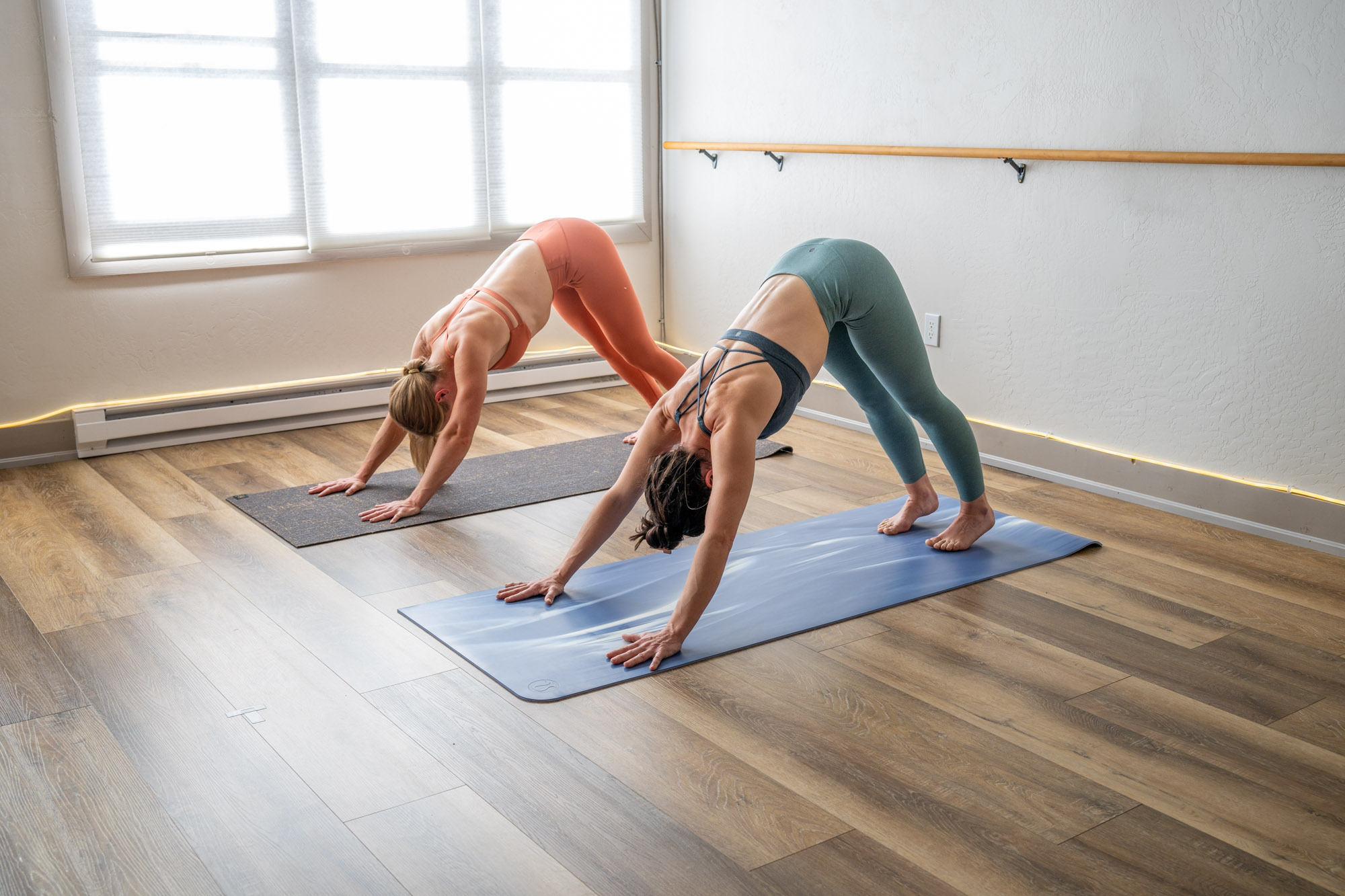
It is a good idea to clean your yoga mat after each use. You can wipe the mat down with a damp cloth and hang it up to dry.
Keep in mind that you should always let your yoga mat dry thoroughly before rolling it up for storage. Otherwise, you will likely come back to find a foul odor and potentially even some mold.
You can use an antibacterial wipe for some mats, while others suggest soapy water. It is essential to read the instructions for your particular mat, as cleaning procedures depend significantly on its materials. Some brands, like Manduka, sell cleaning solutions for their yoga mats and do not recommend using any other cleaning products.
Depending on the frequency of your practice, buying a higher-quality mat may make sense for you. If you know you love yoga and expect to keep up with your practice, investing in a durable mat like the Manduka PRO Yoga Mat will have a longer life. At this level of quality, you can expect to pay around $80-140.
If you are a beginner, we do not recommend spending this much at first. You can find a decent, comfortable mat in the range of $20-50, and we recommend the Gaiam 6 mm as the best yoga mat for beginners.
Be sure to also check out package deals. Some mats may come with accessories like carrying straps or yoga towels. This can help get you fully equipped at a lower cost.


The Best Sports Bras of 2025-2026
Sports bras are a necessity for action but can also be a culprit for pain. We tested the best options for all types from Athleta to SheFit and more.
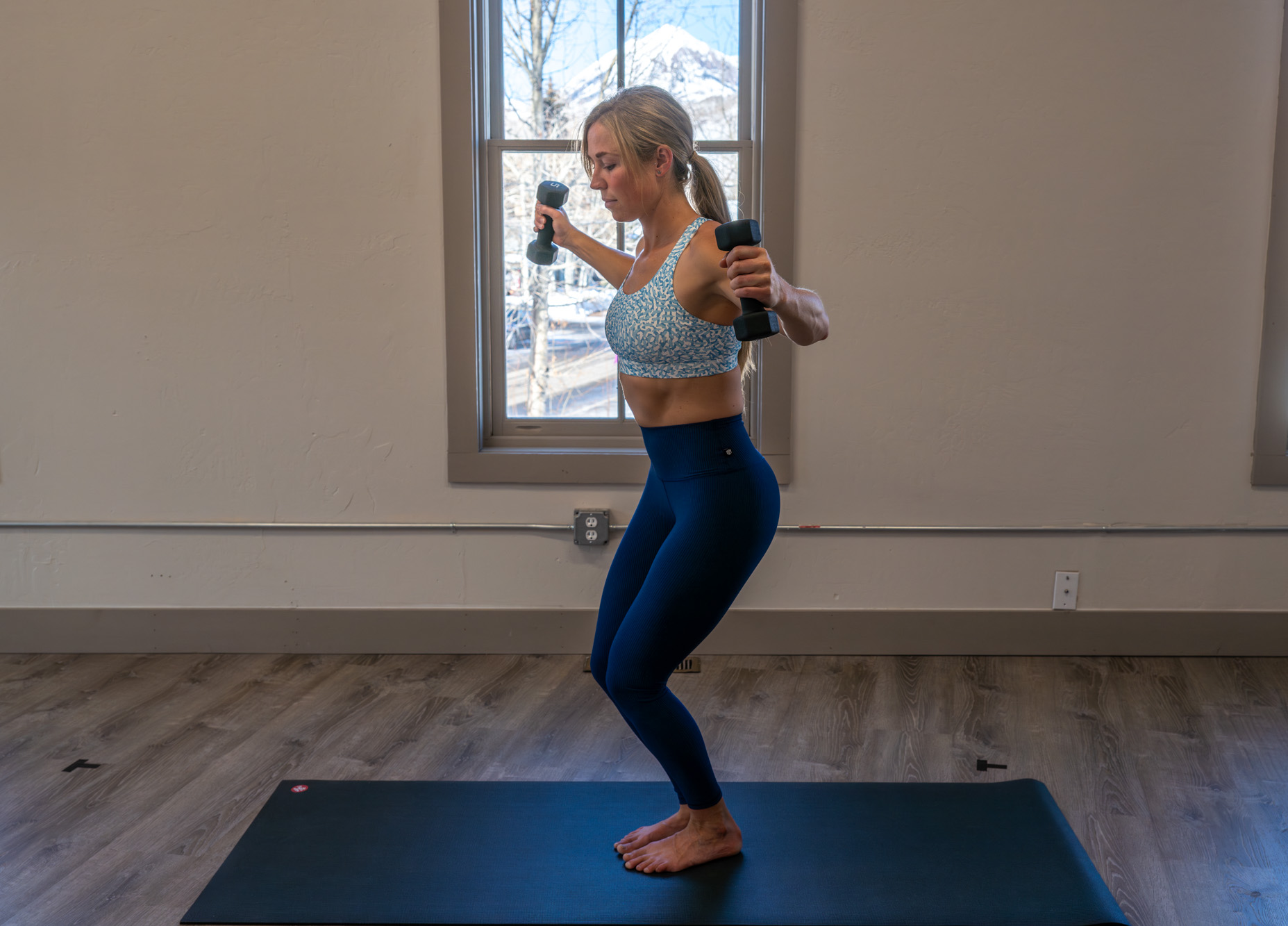
The Best Women’s Workout and Travel Leggings in 2025
We found the best women’s workout and travel leggings. With these designs you can go from yoga or a mountaintop to the coffee shop without a hitch.
